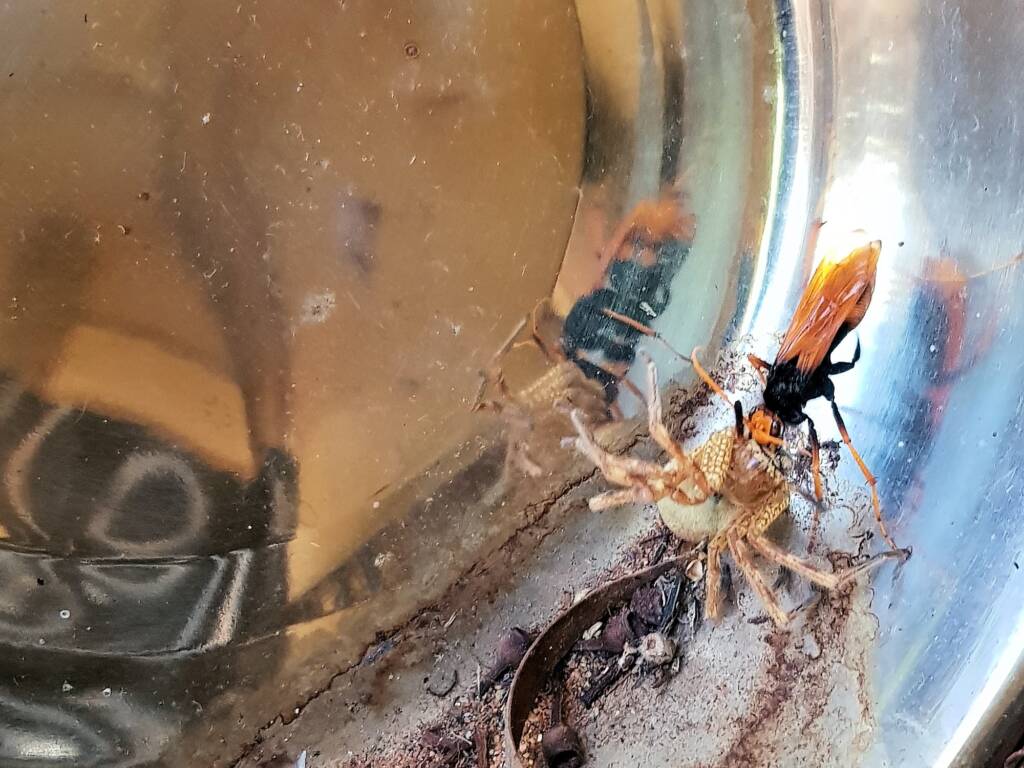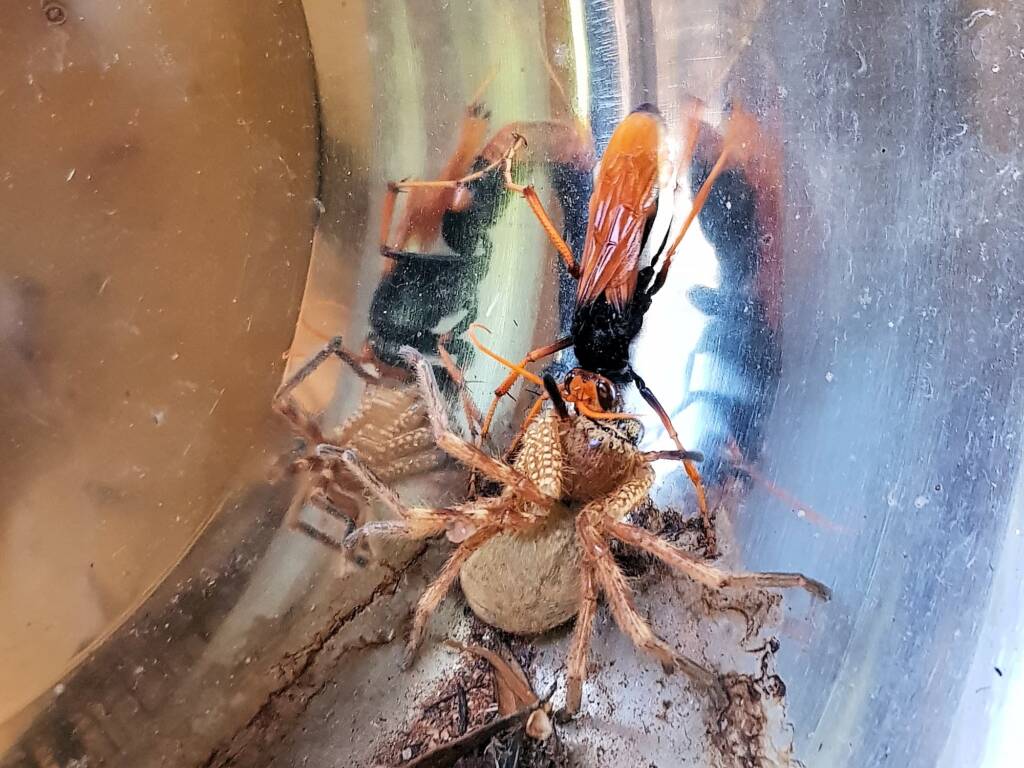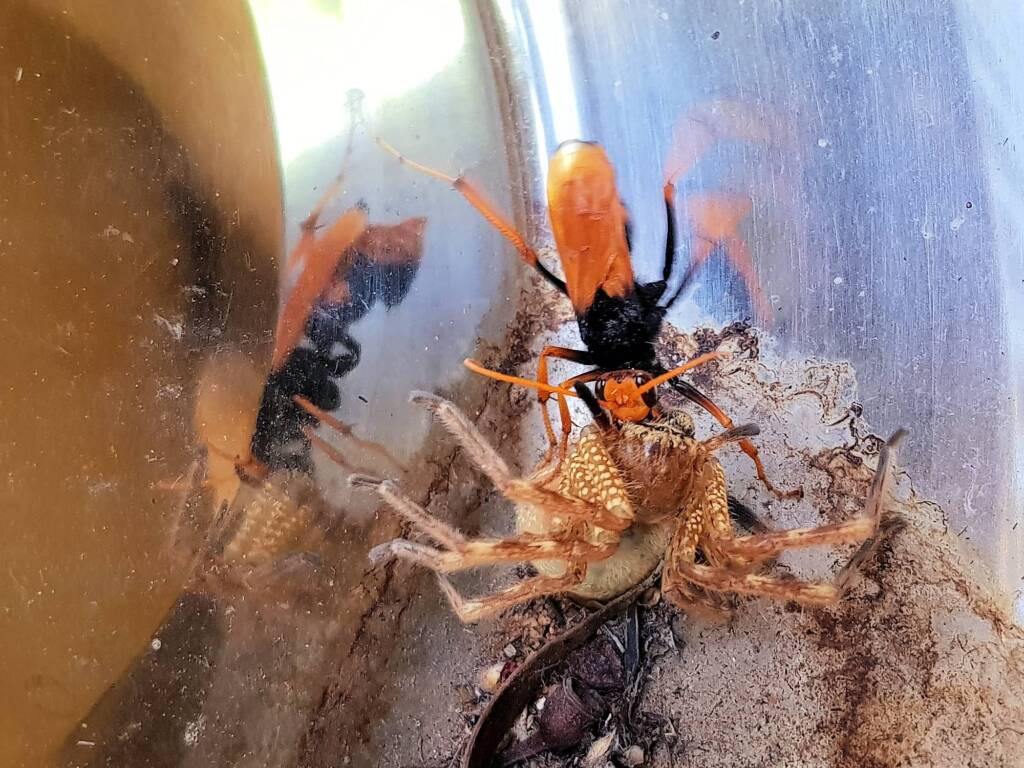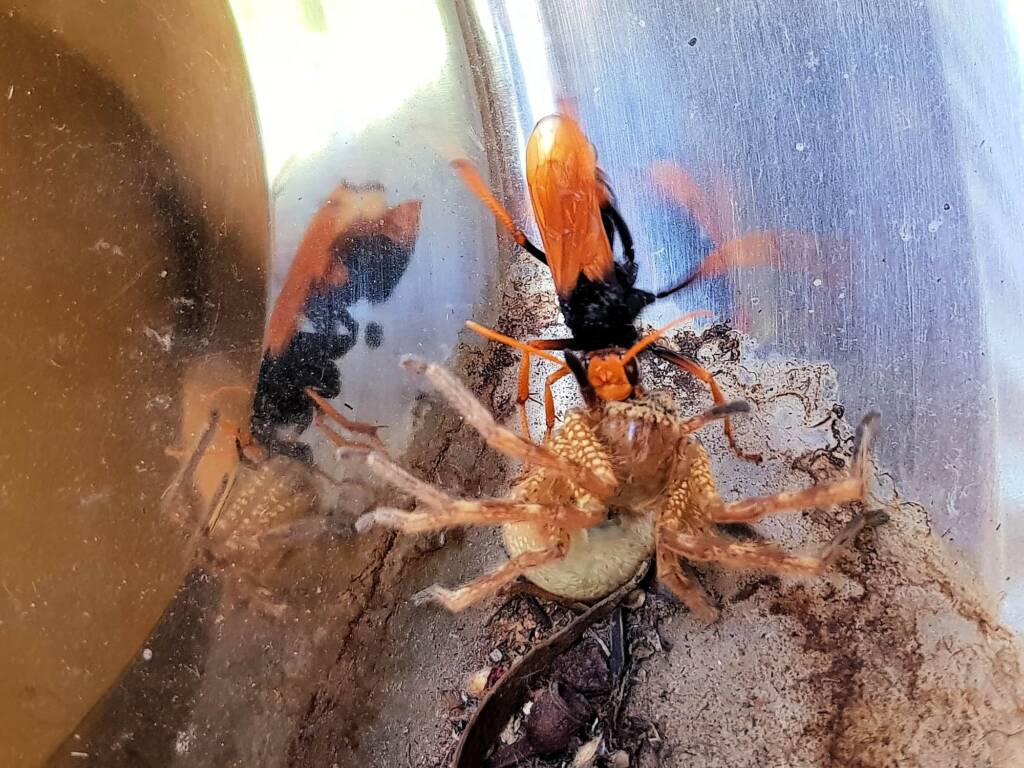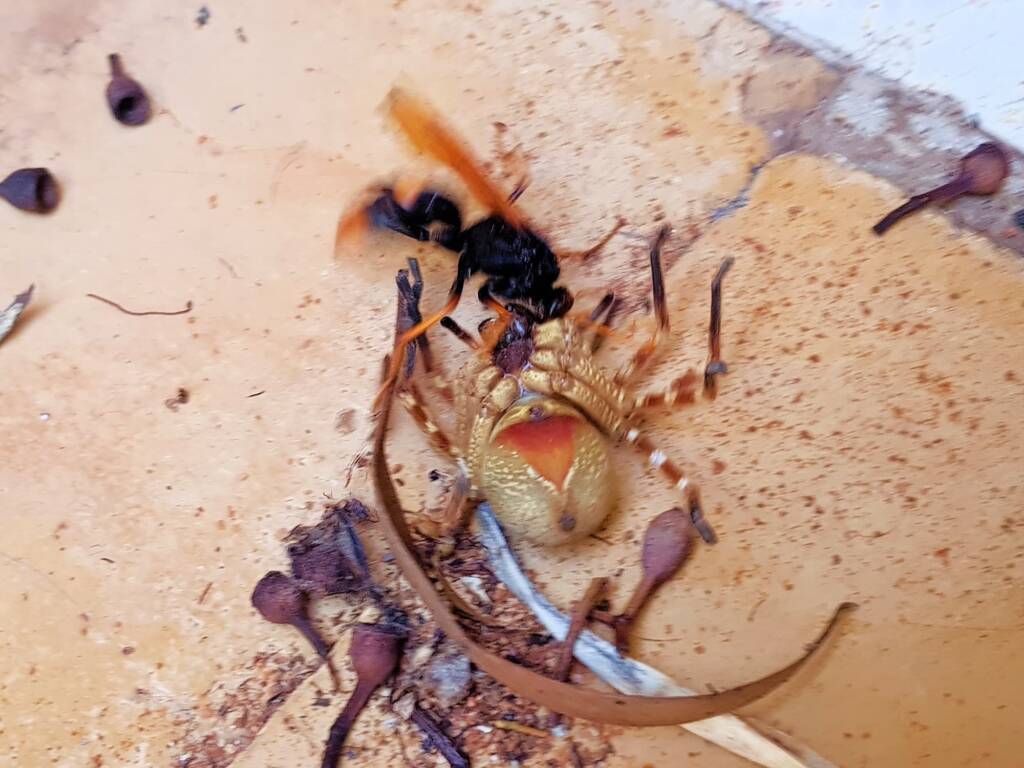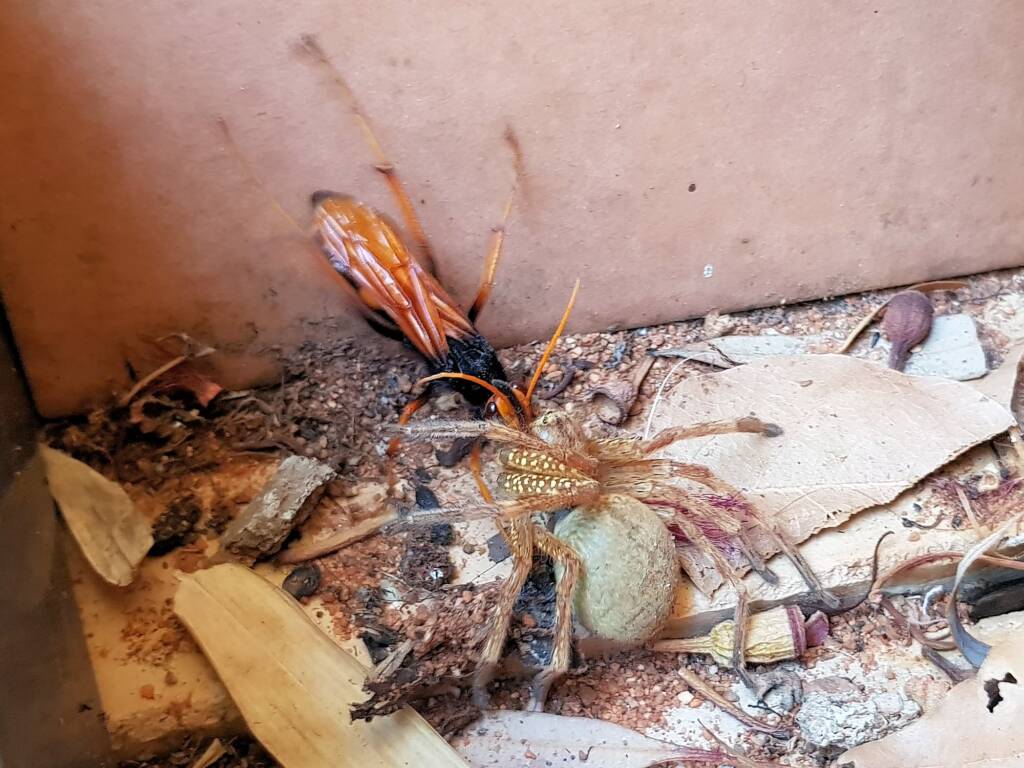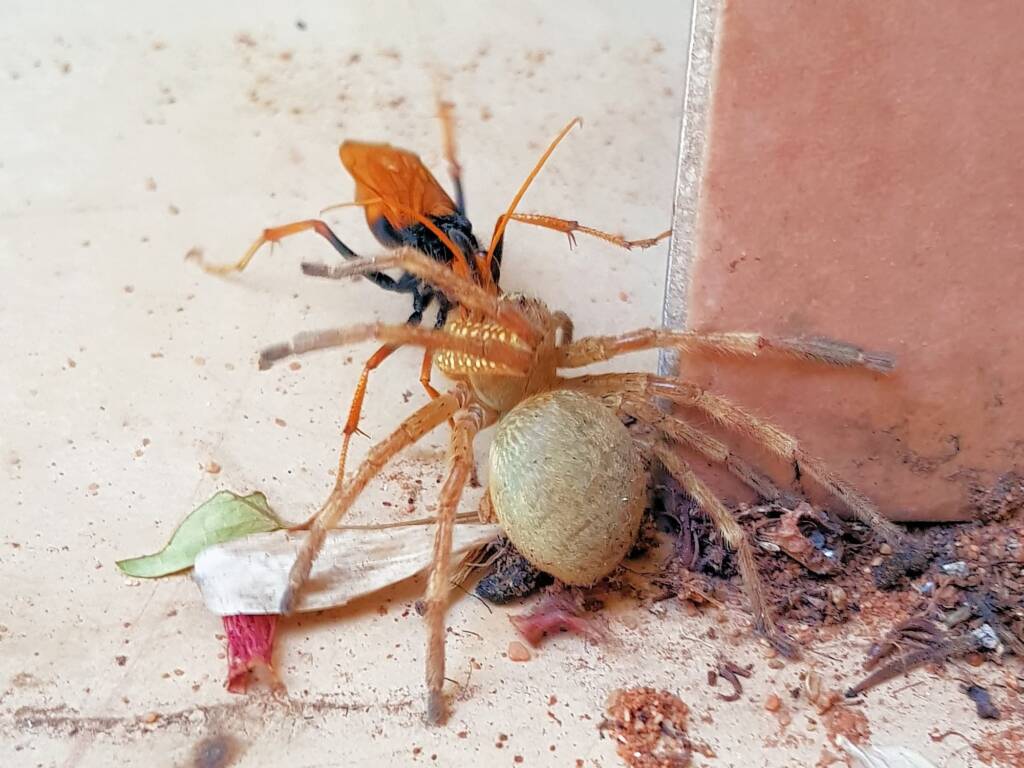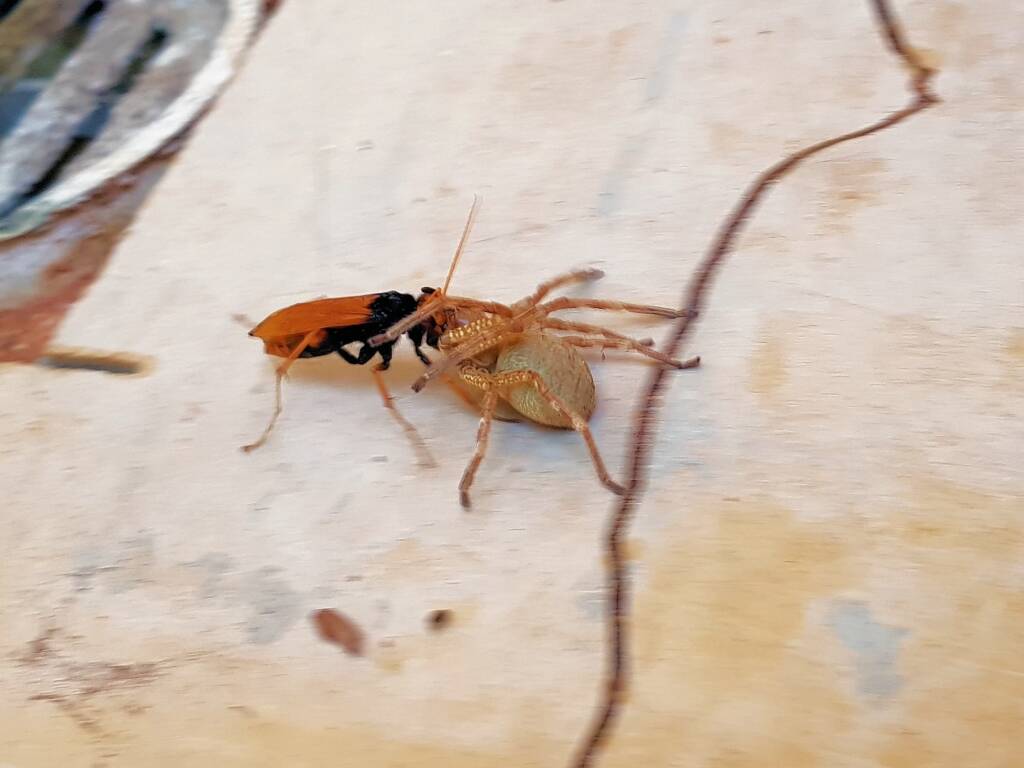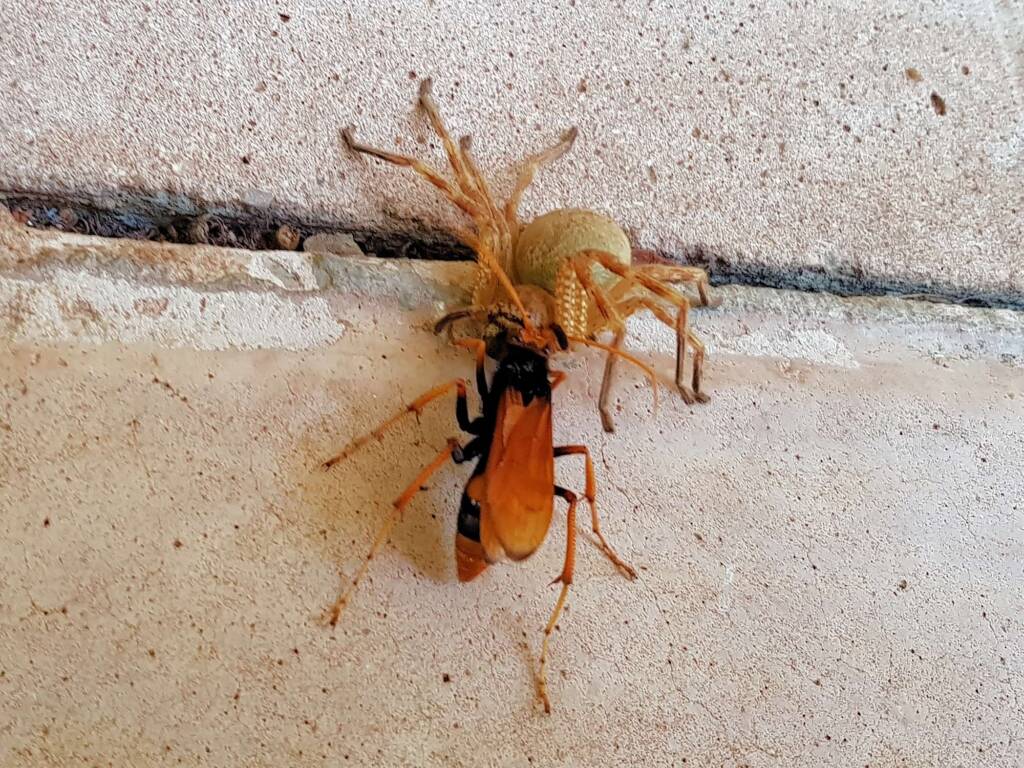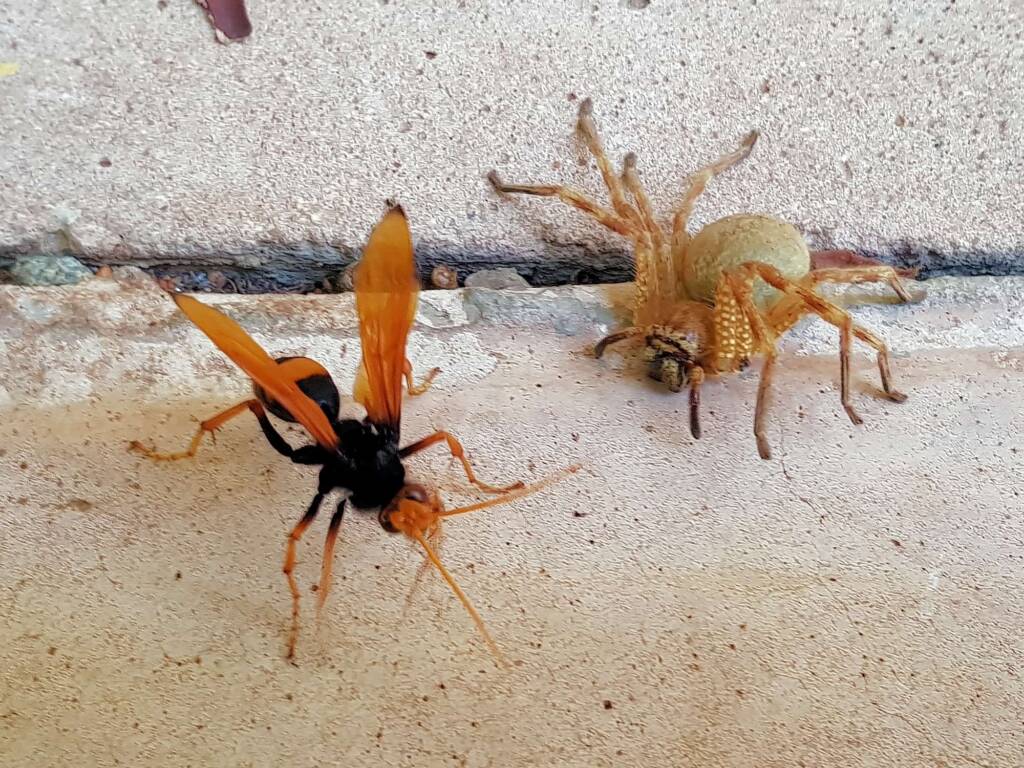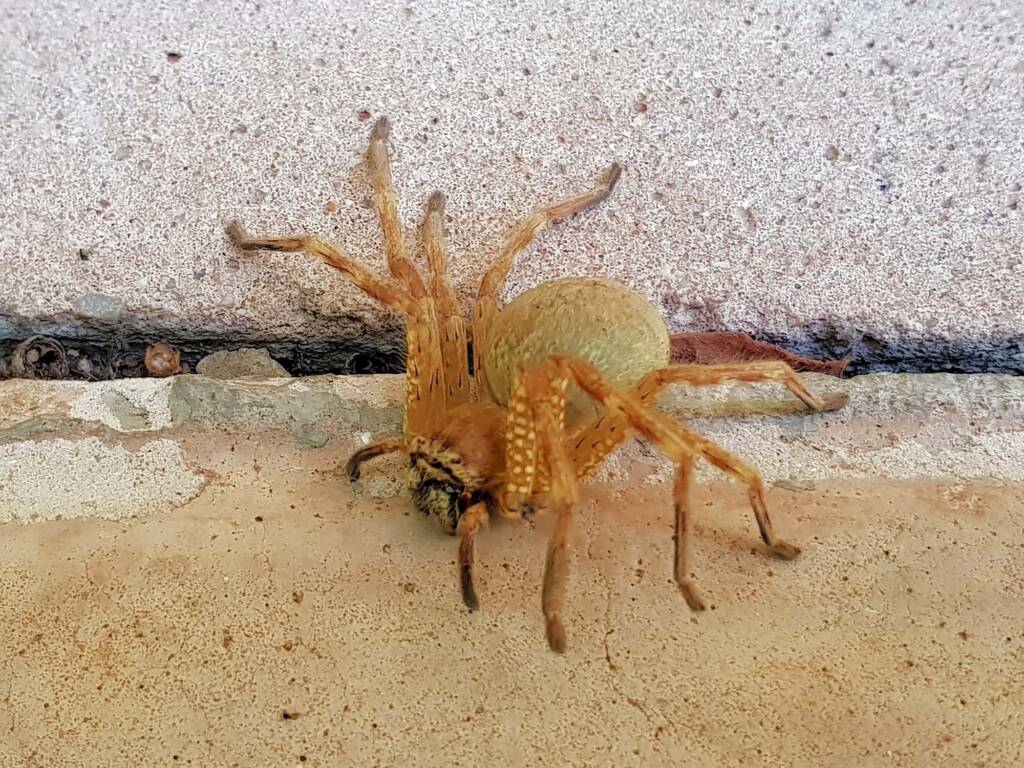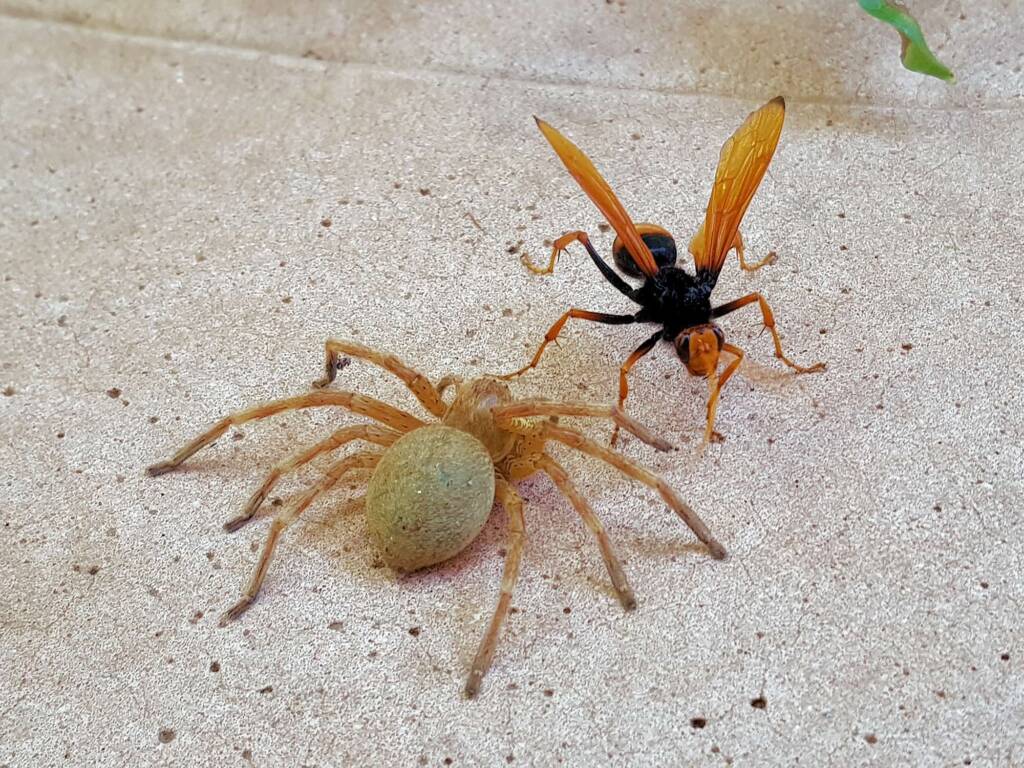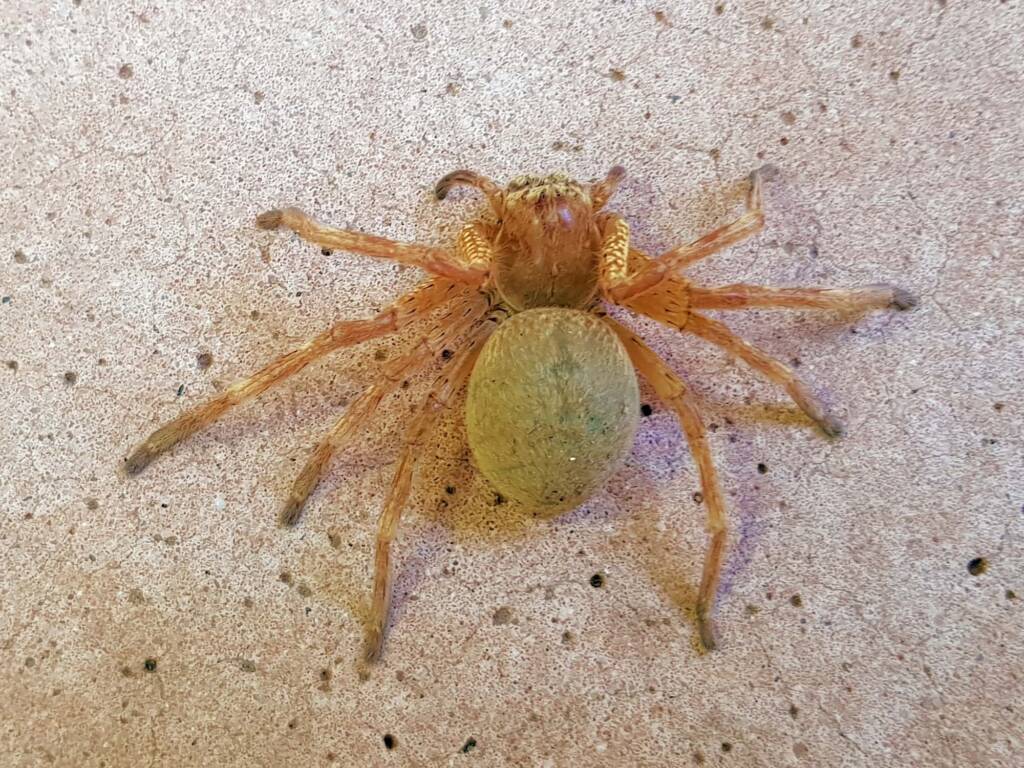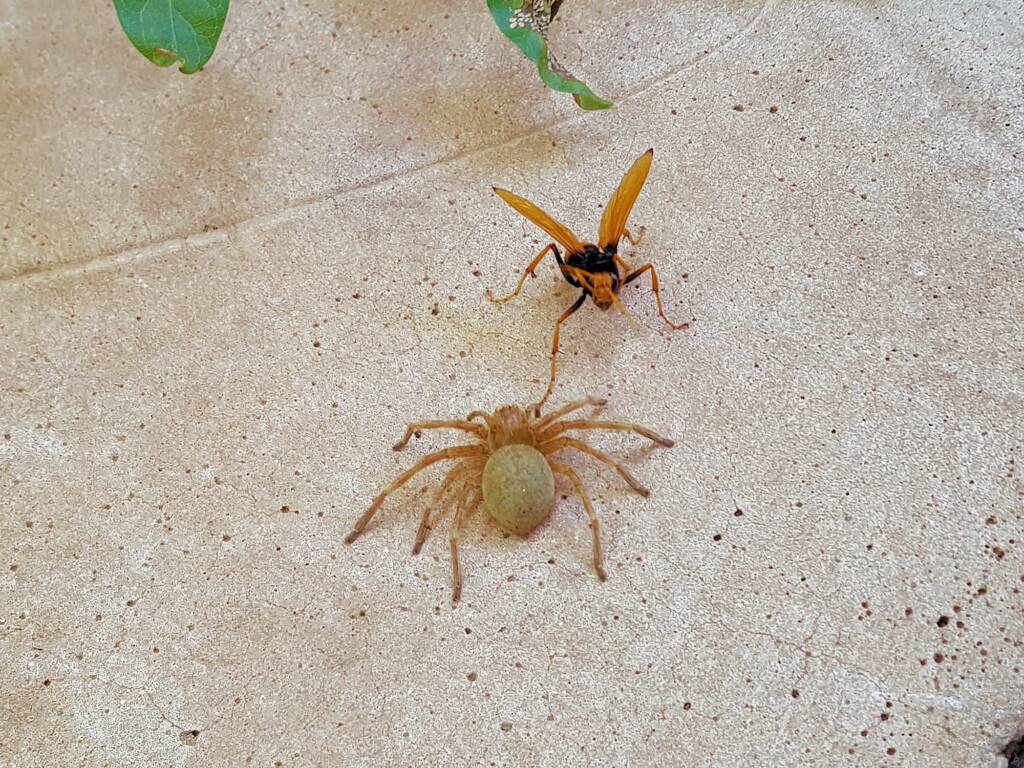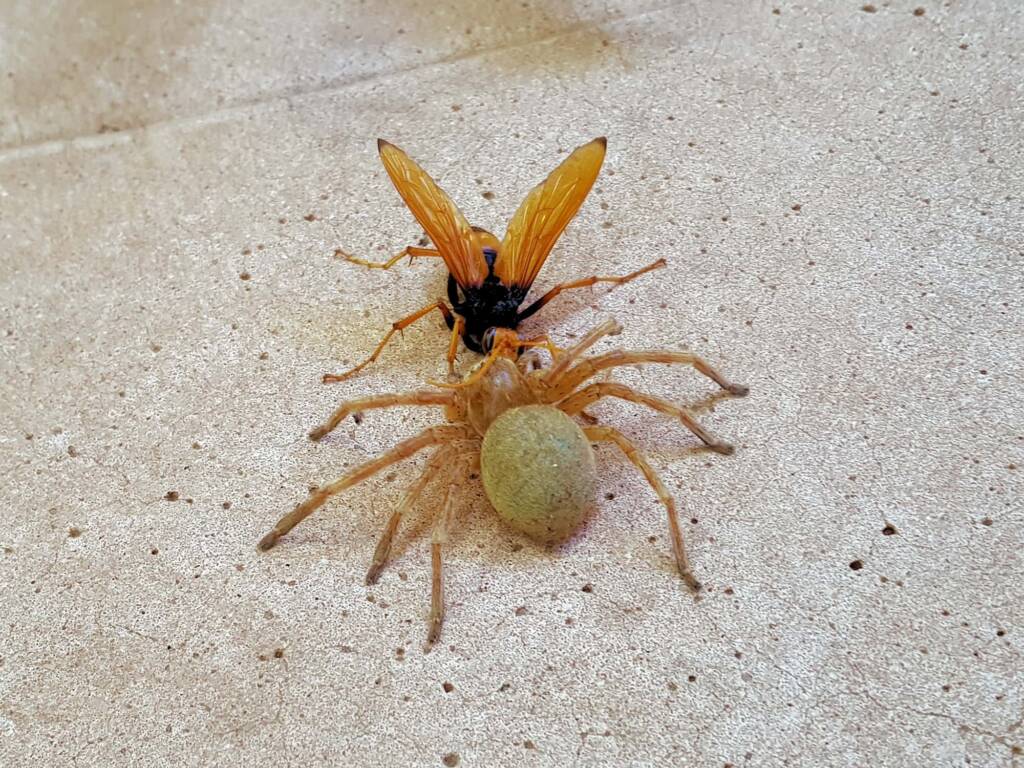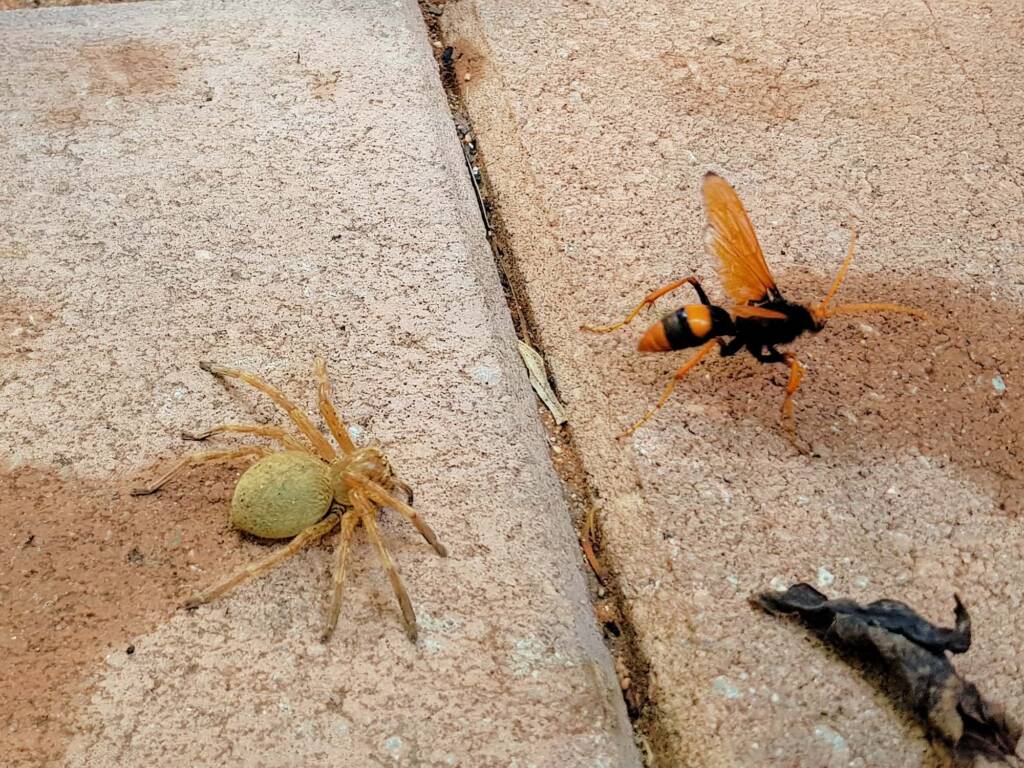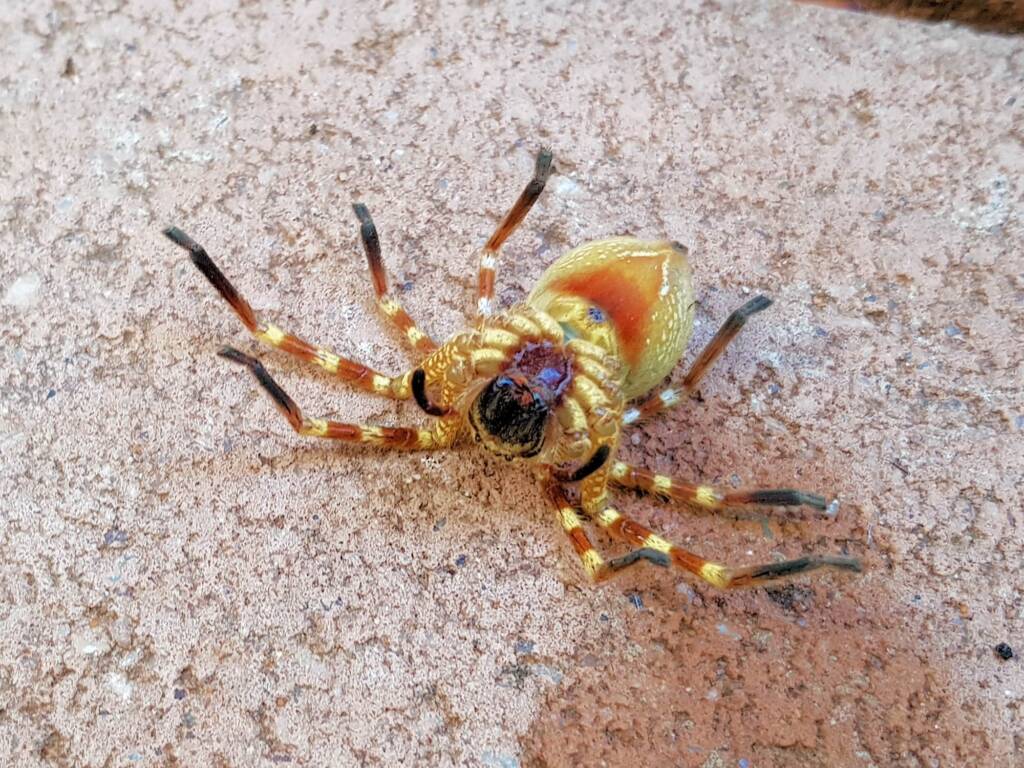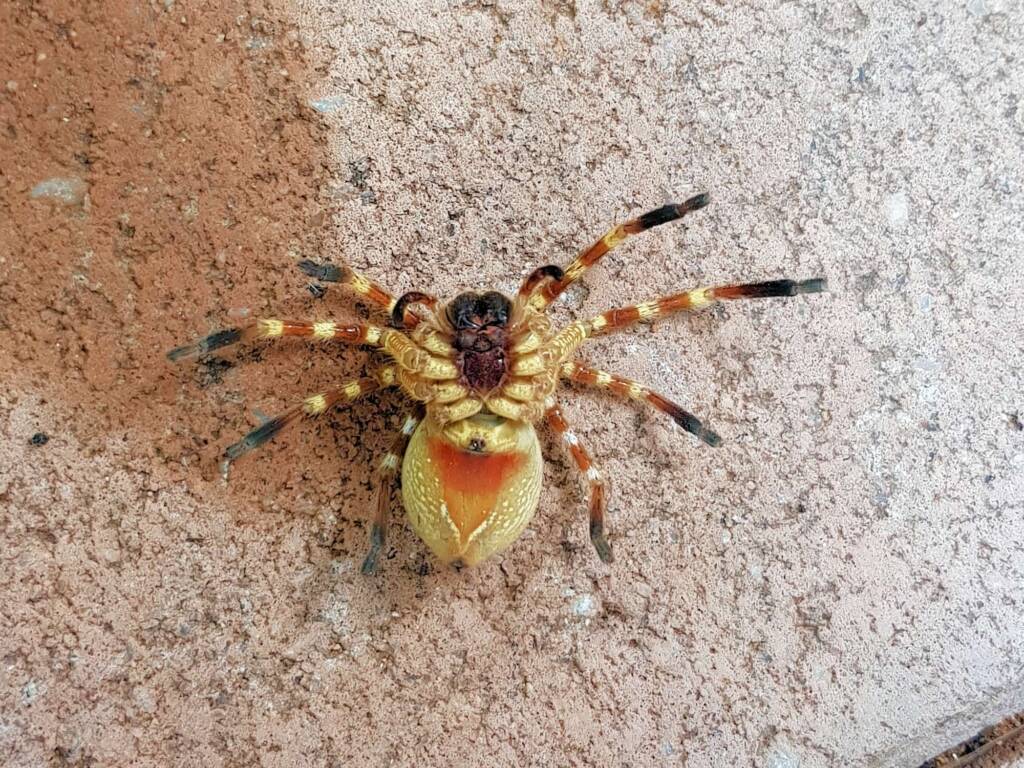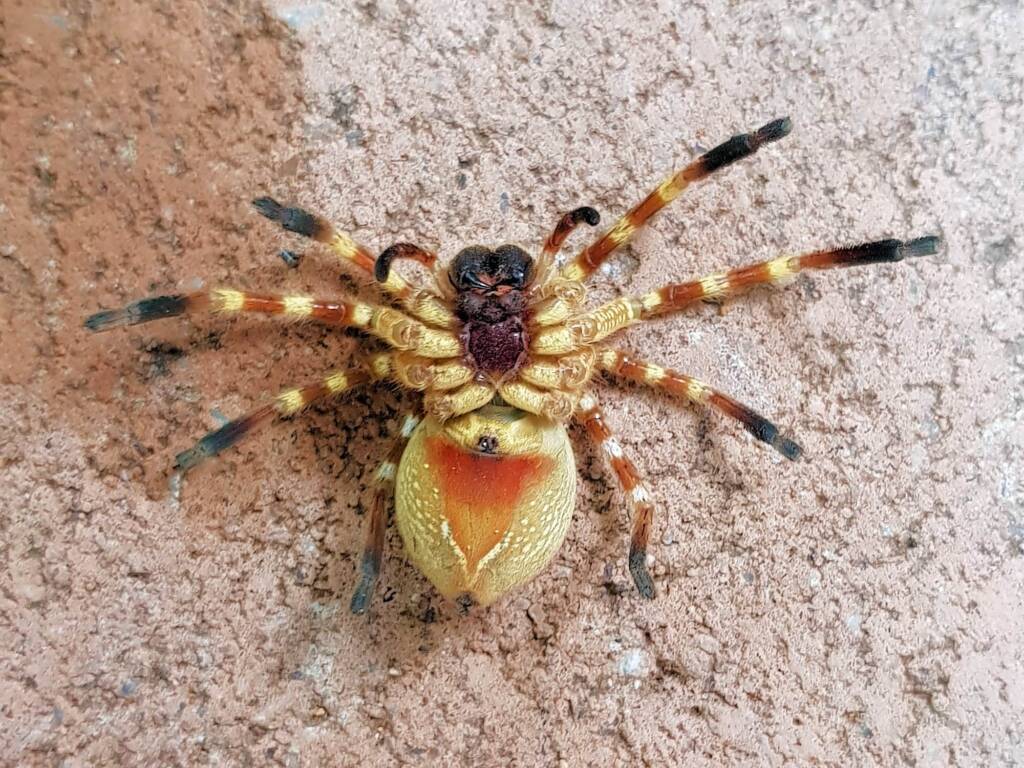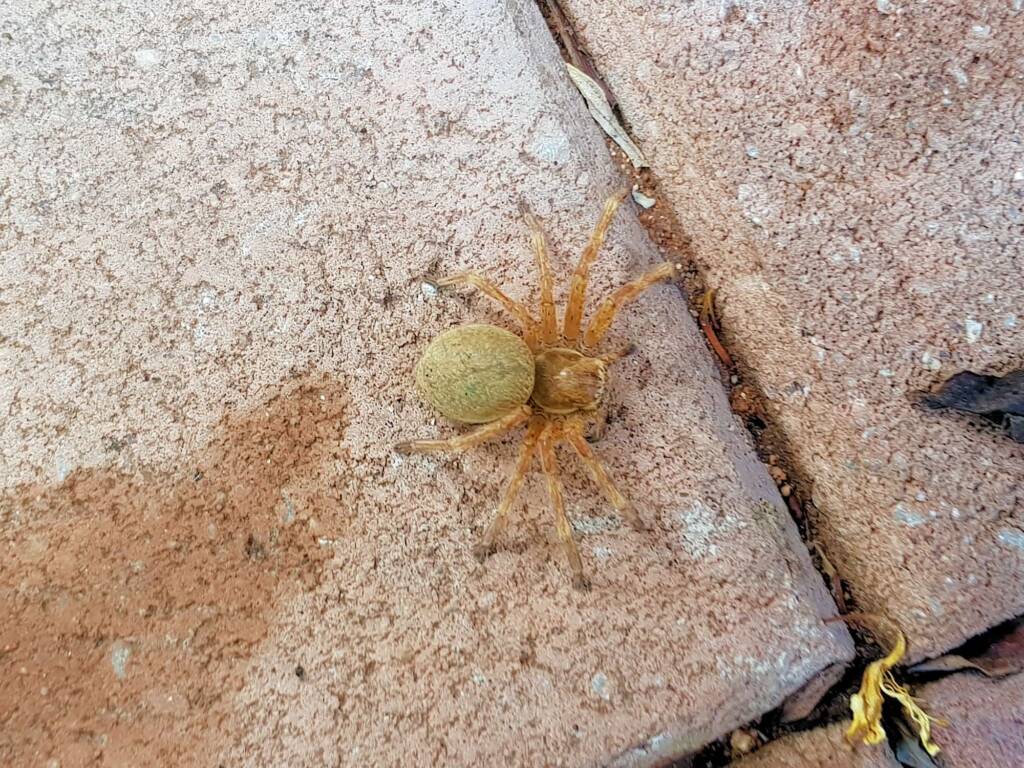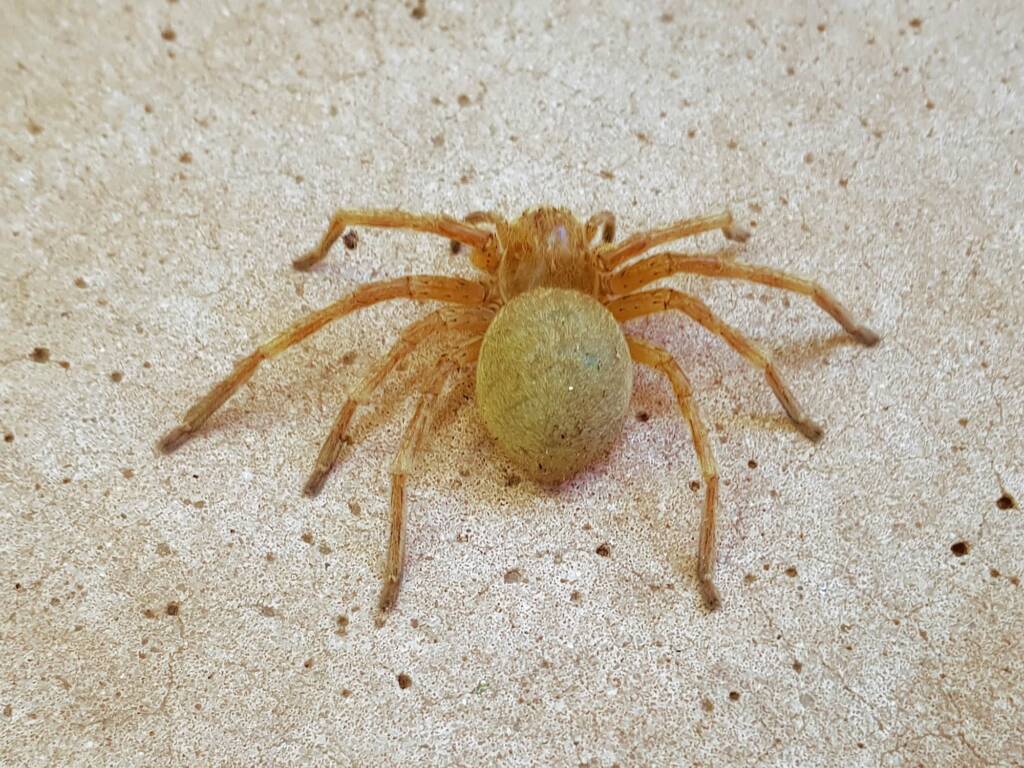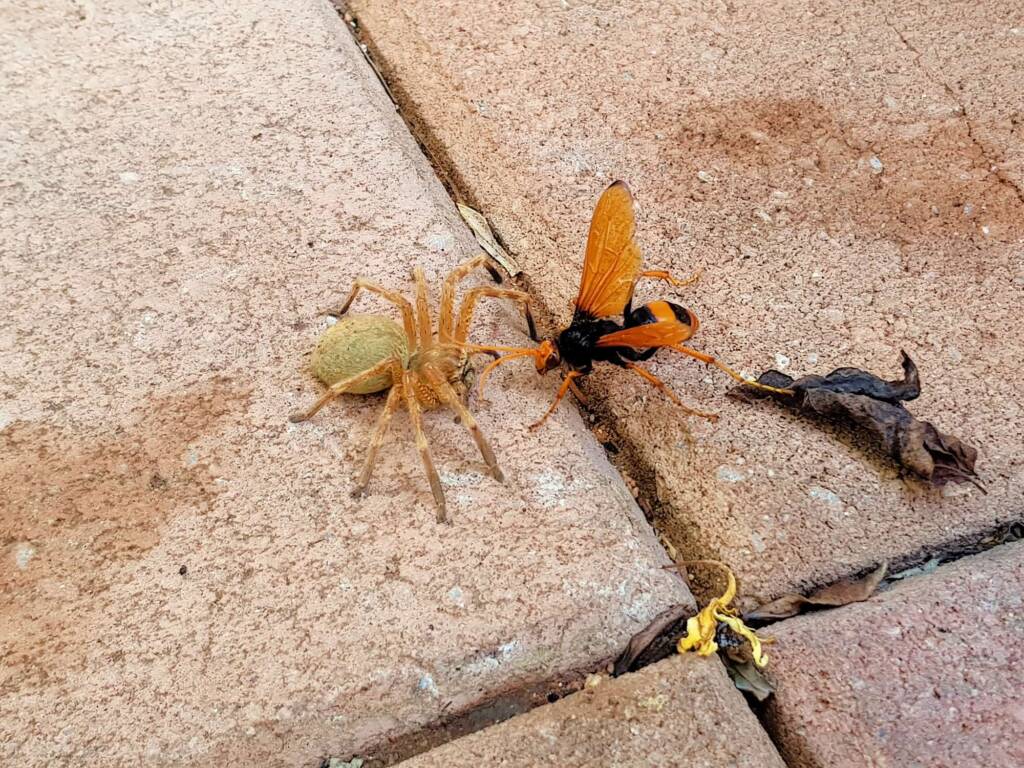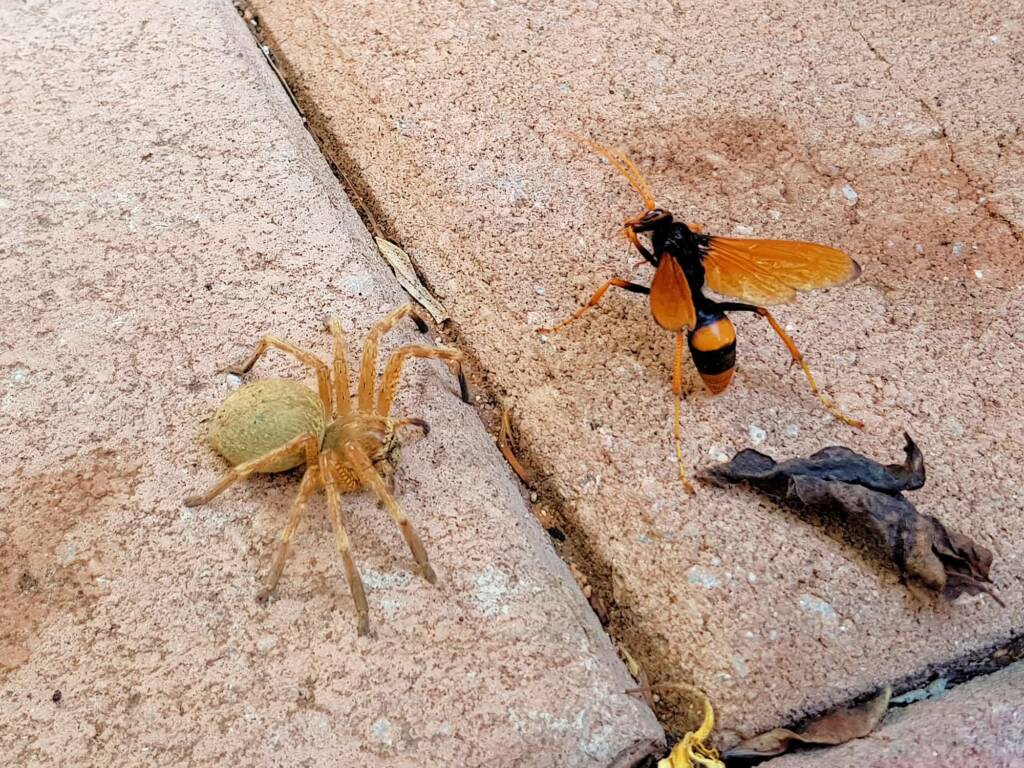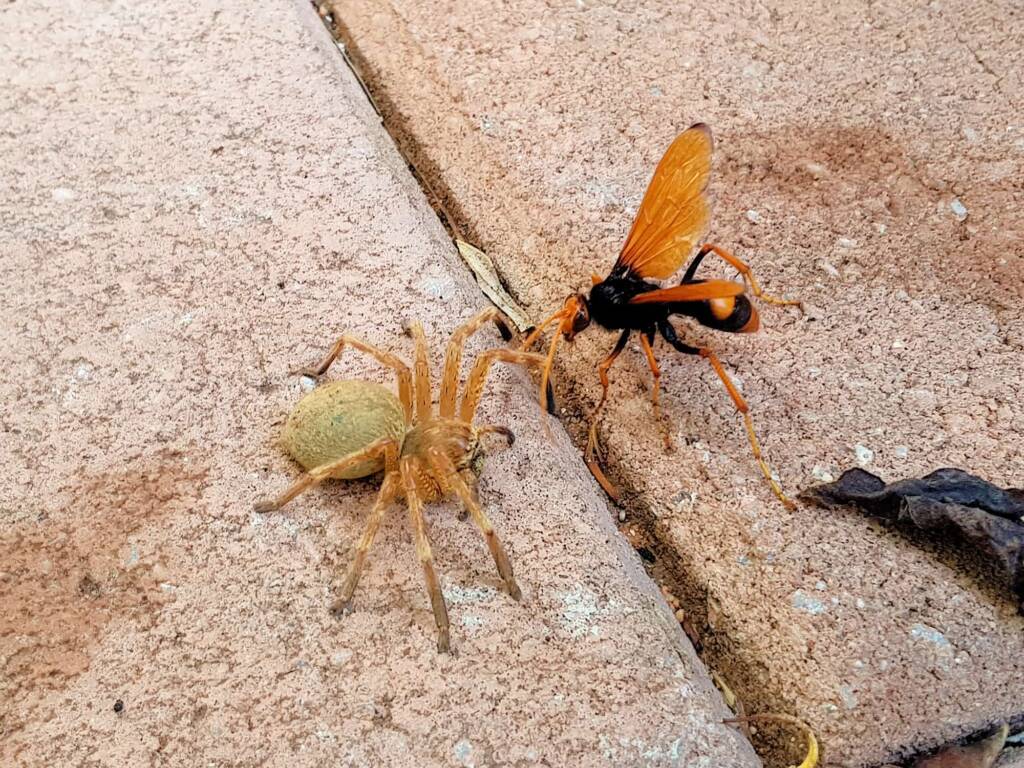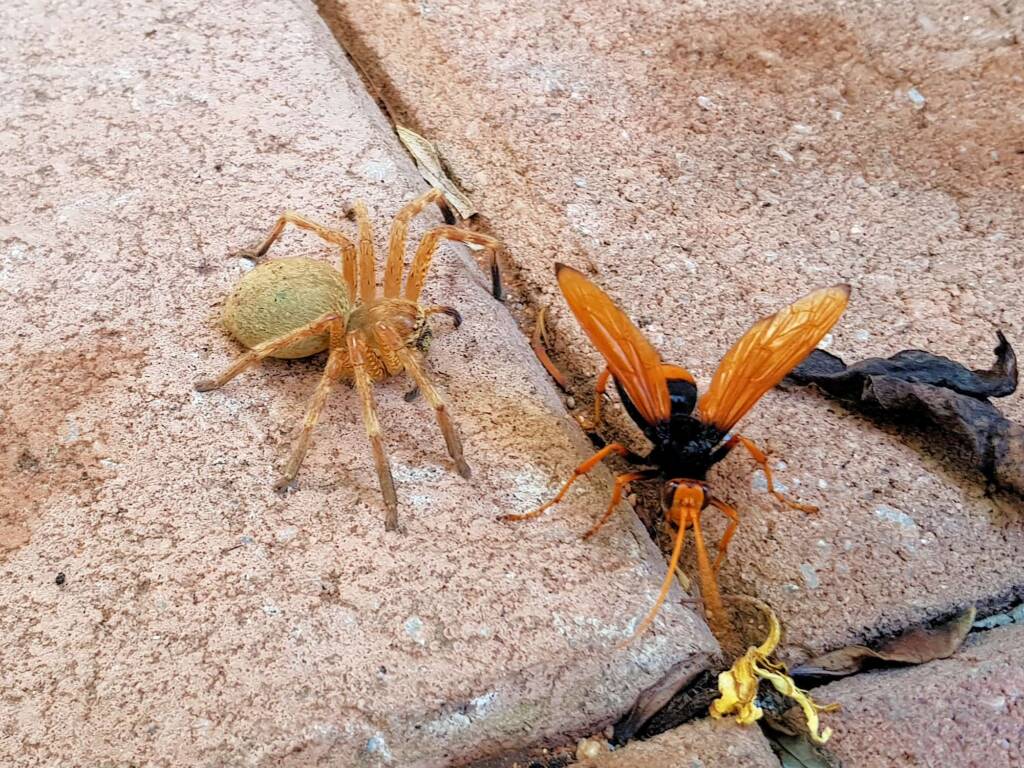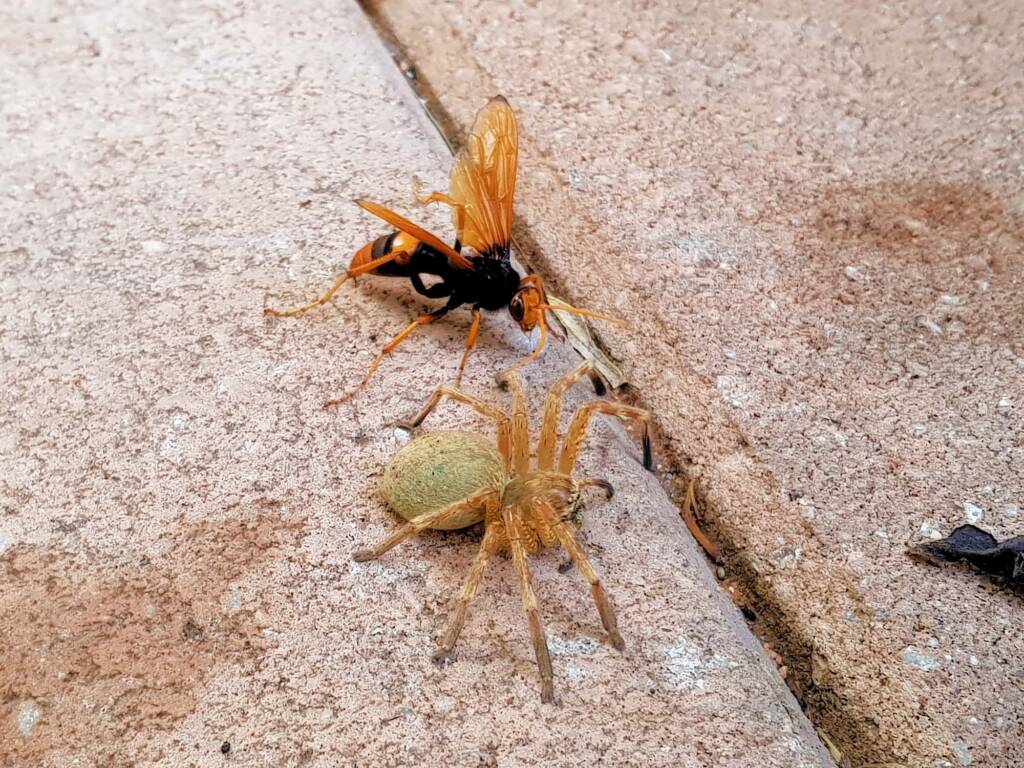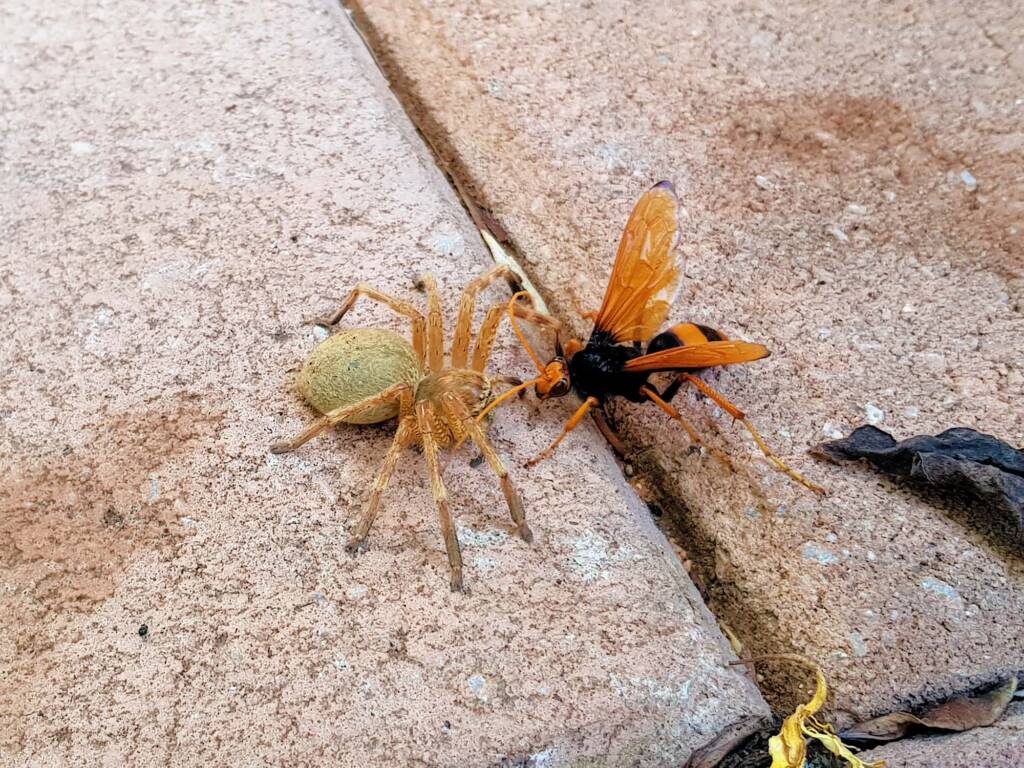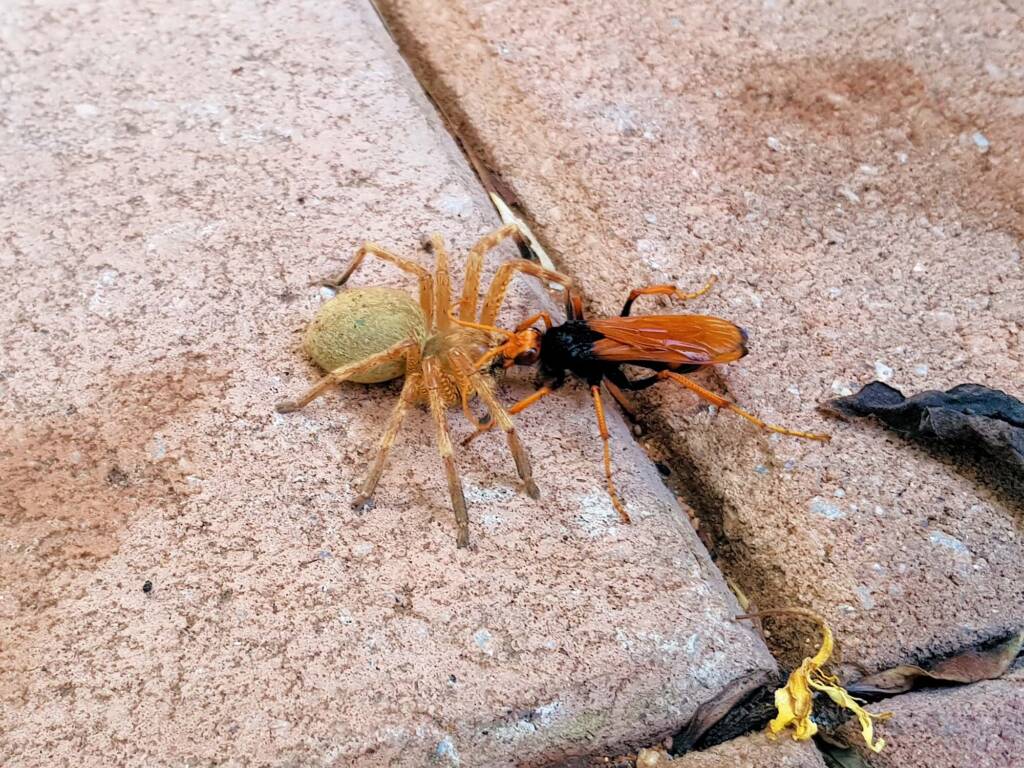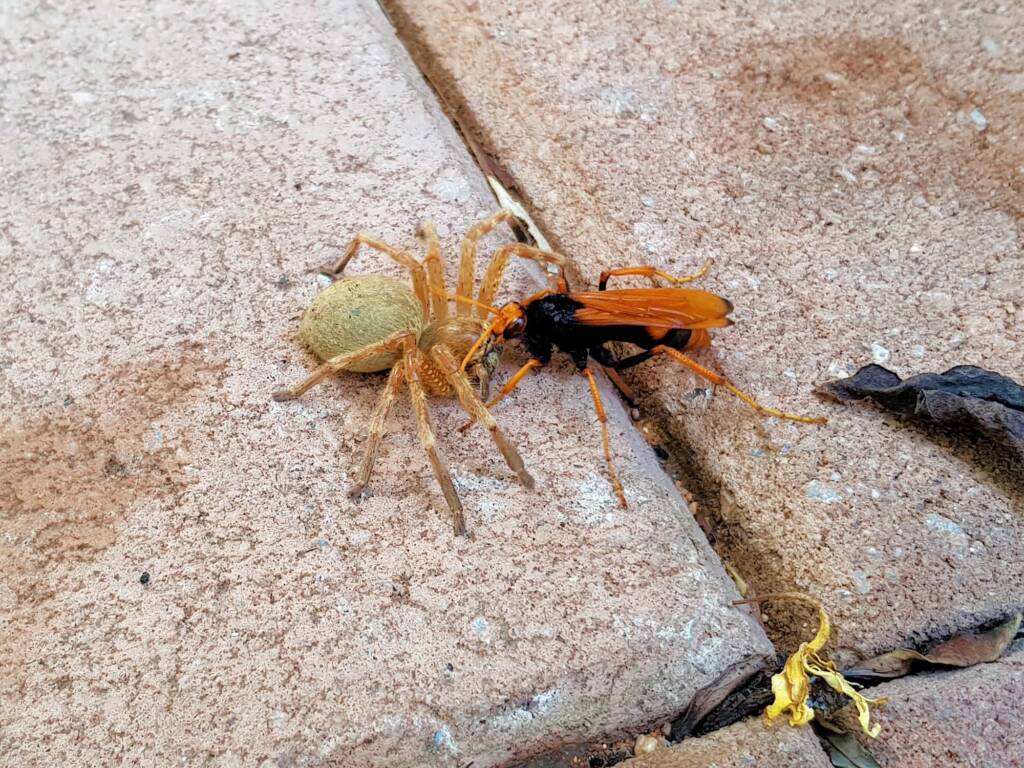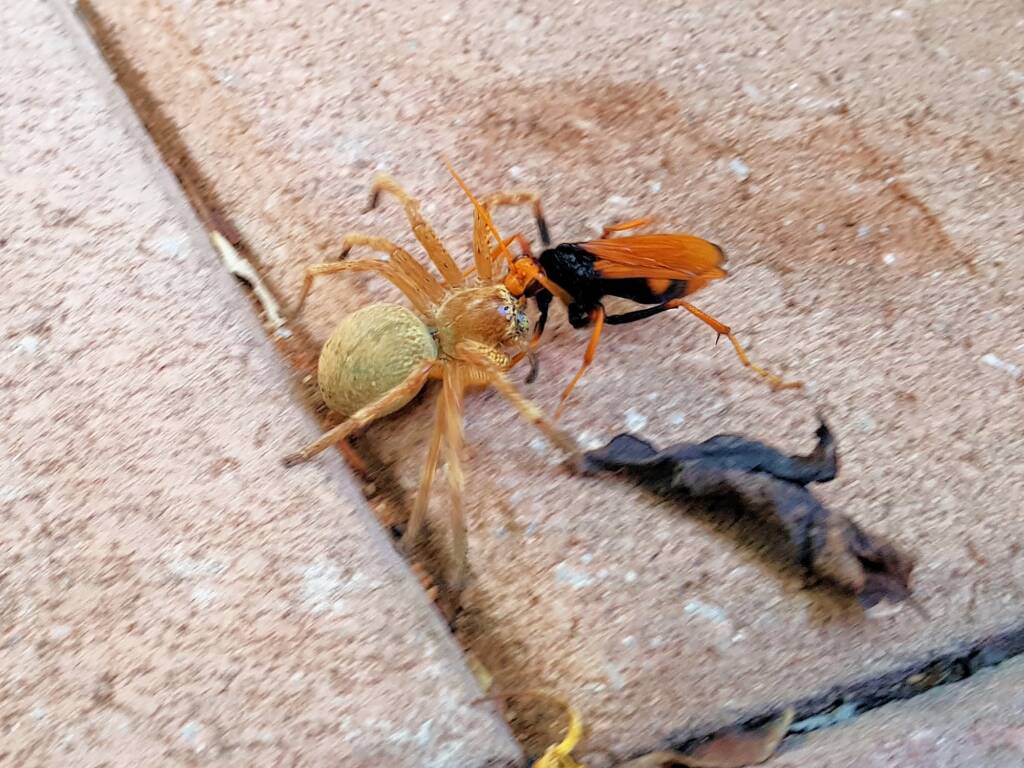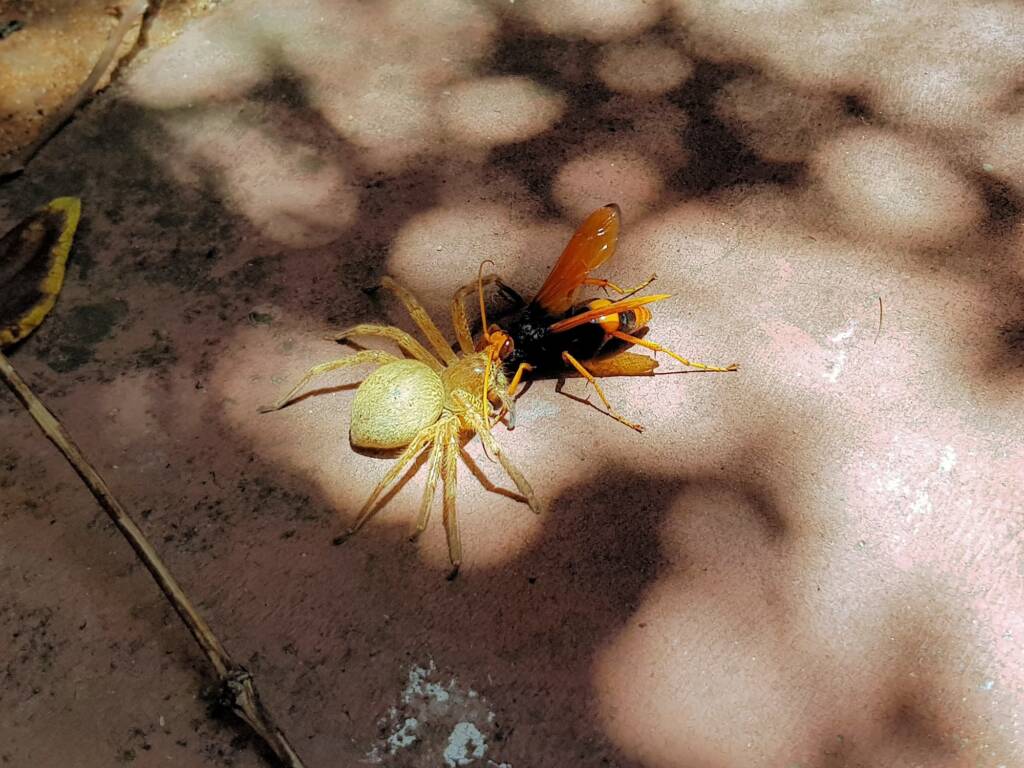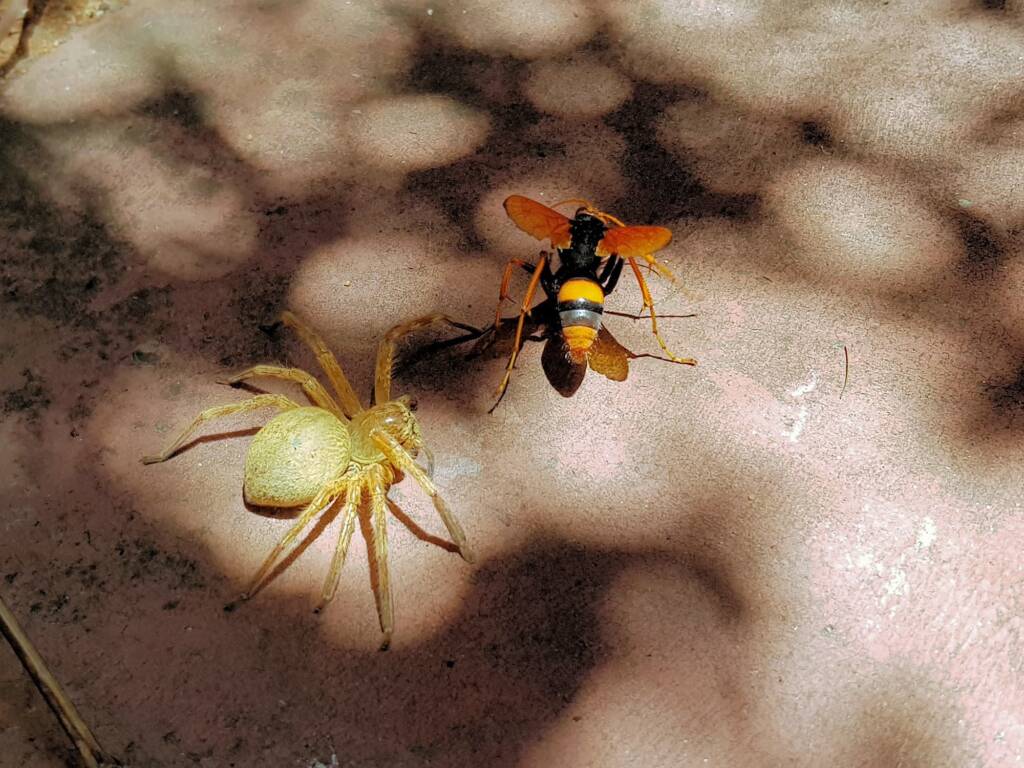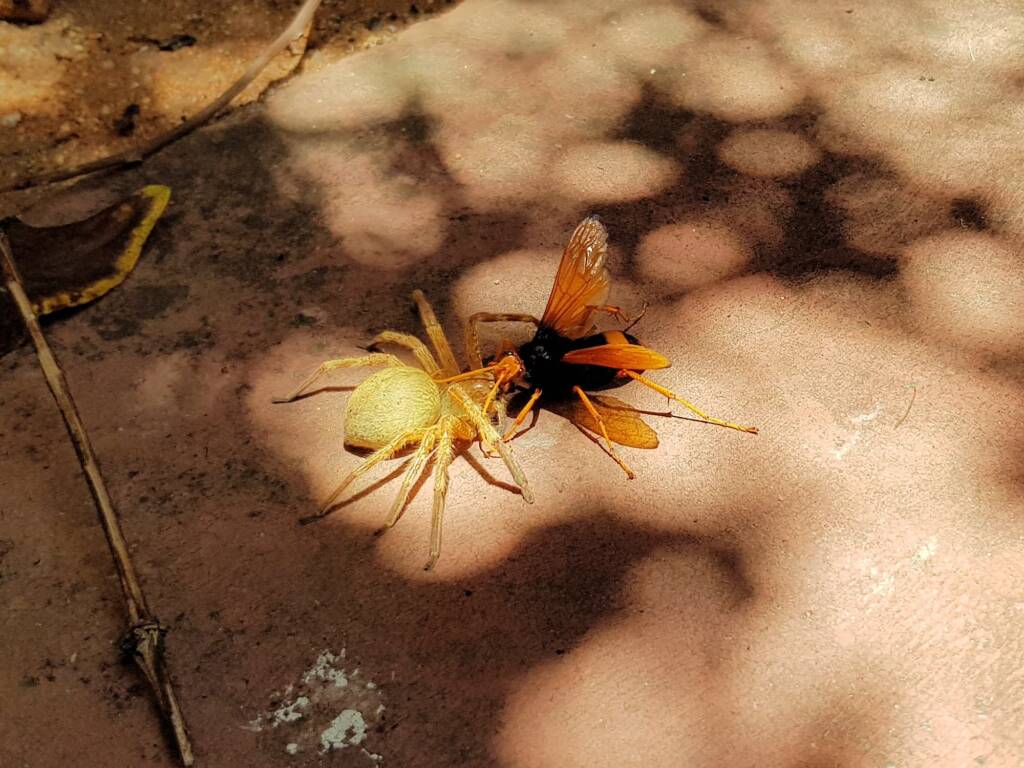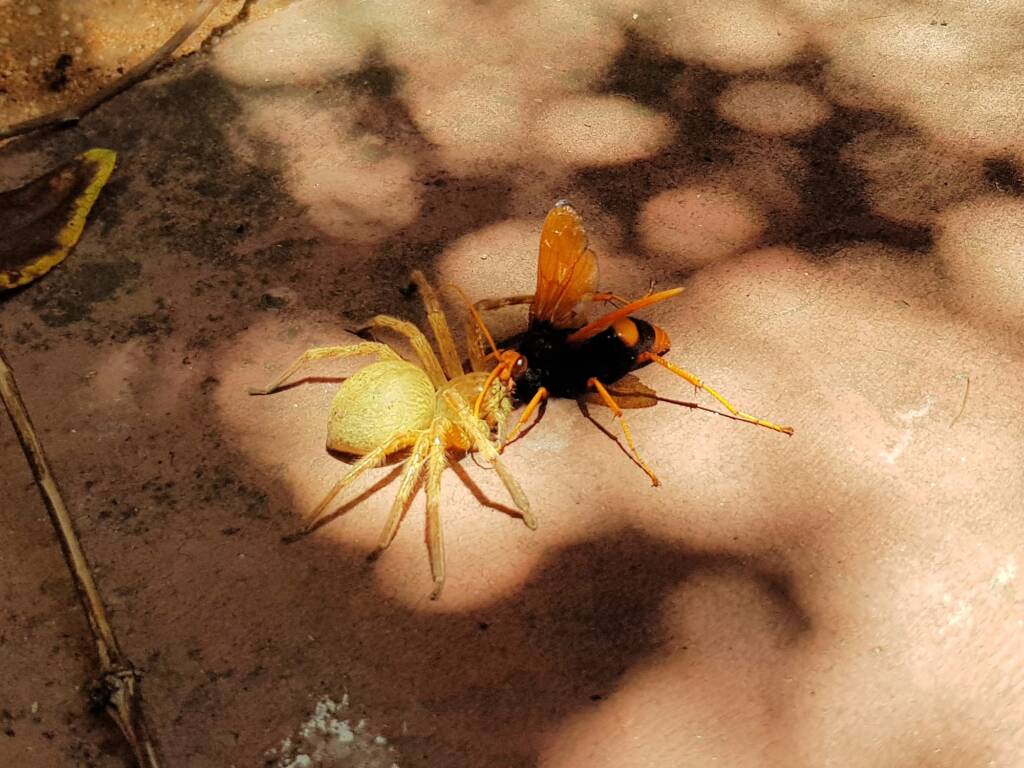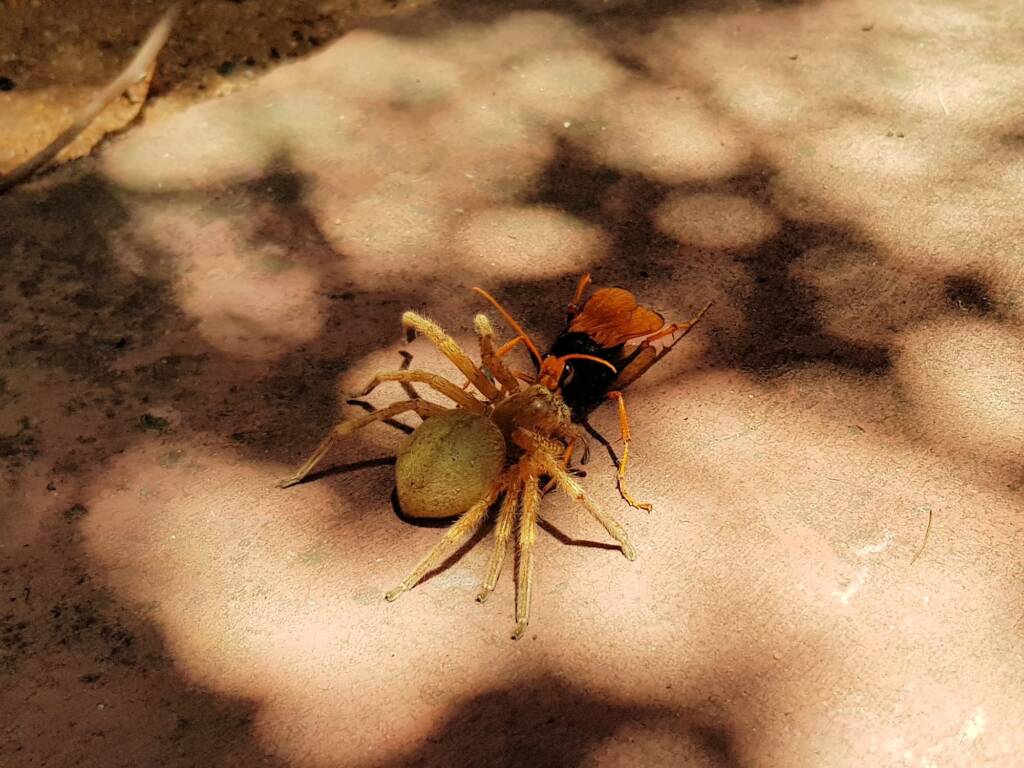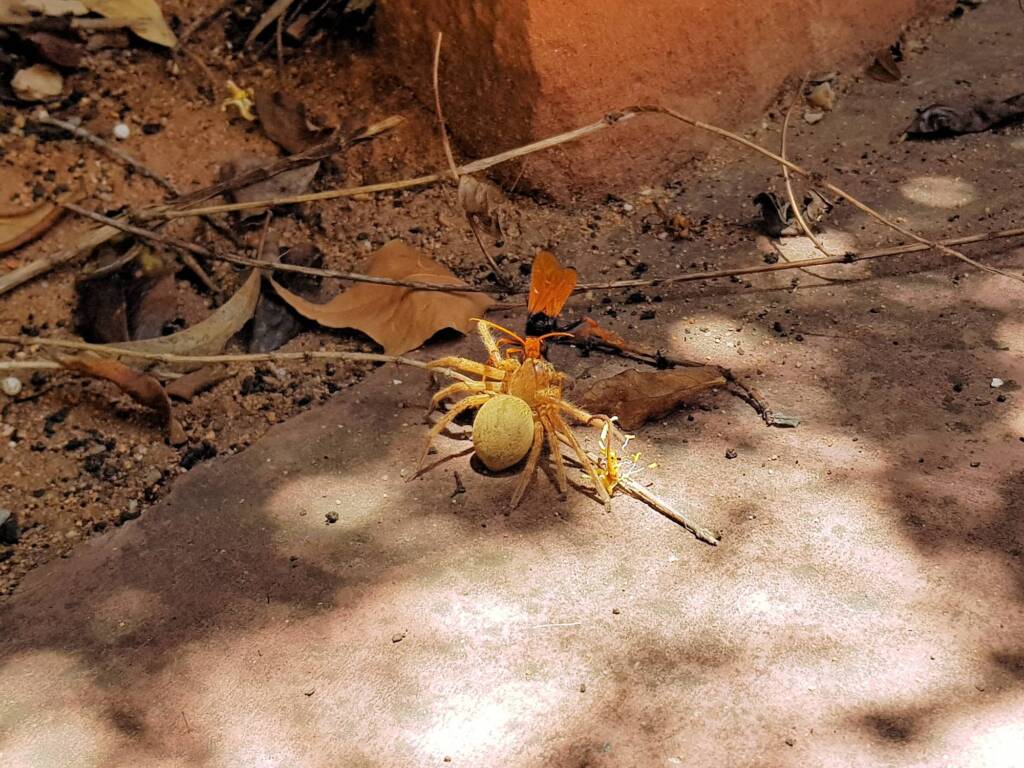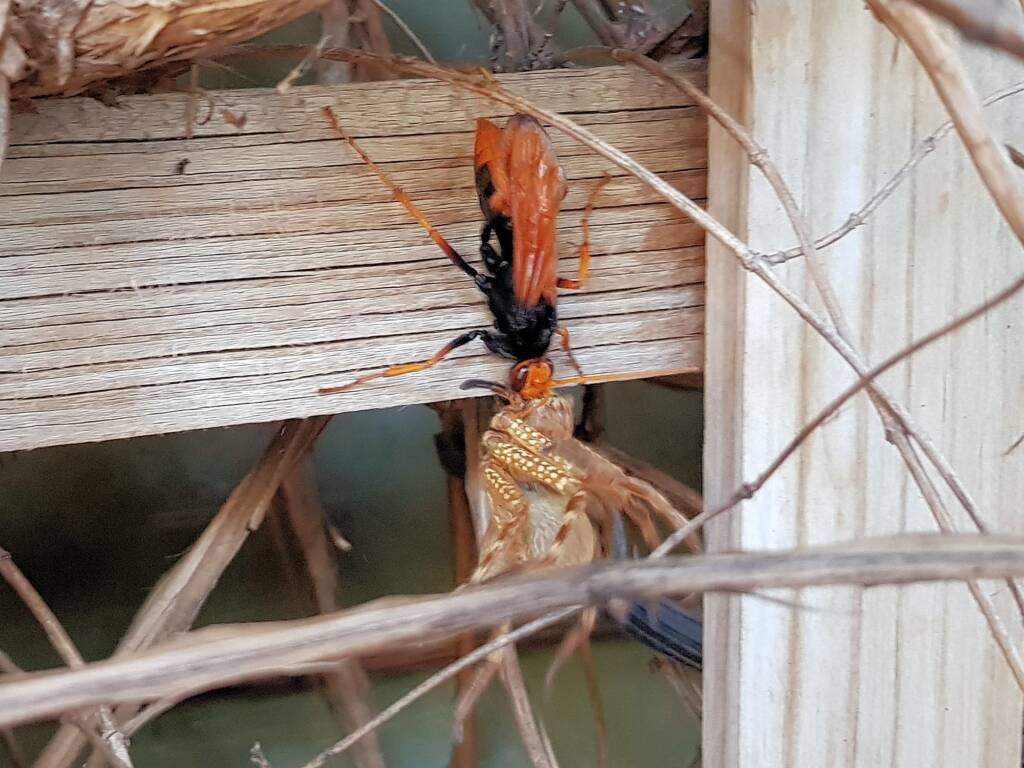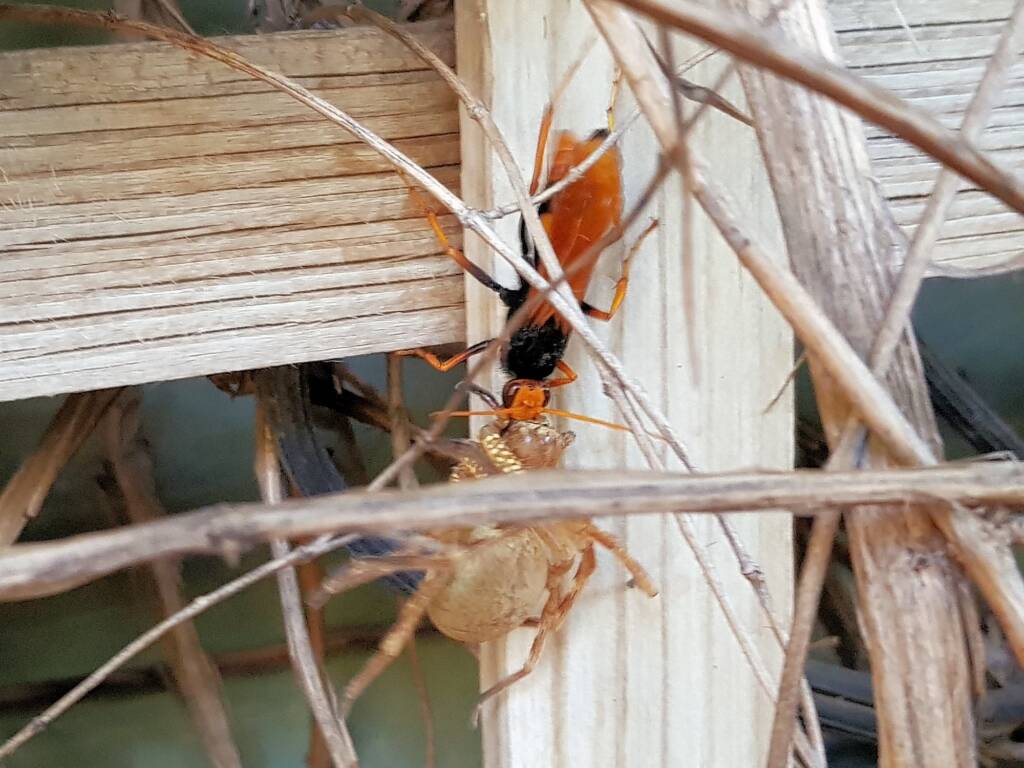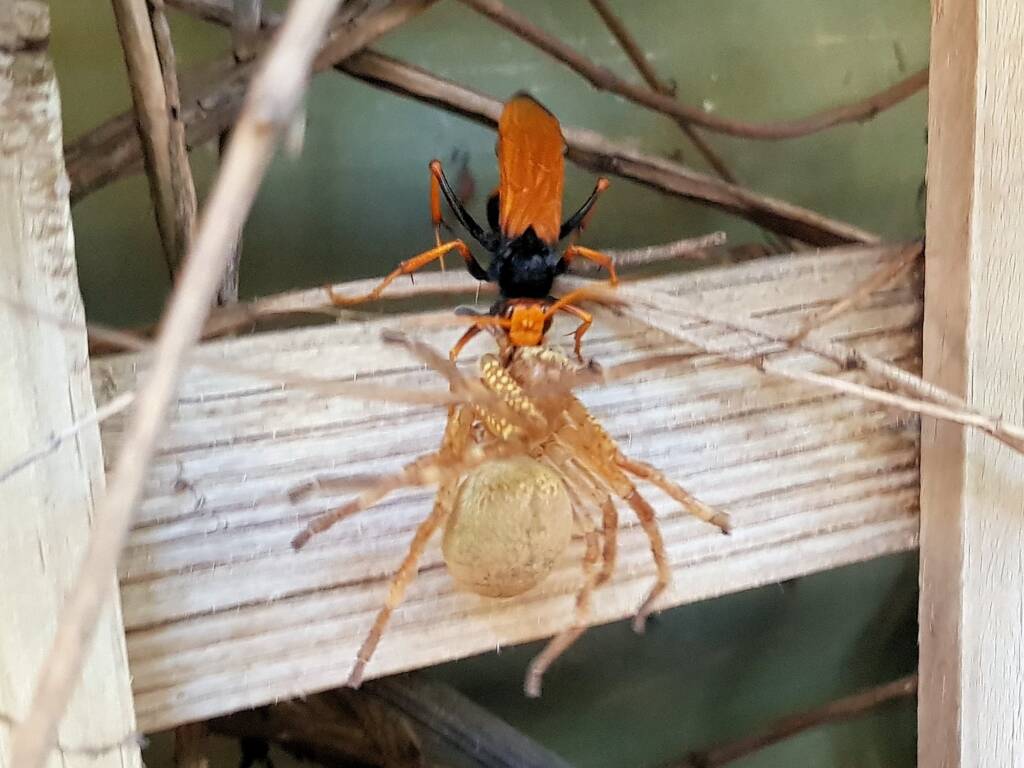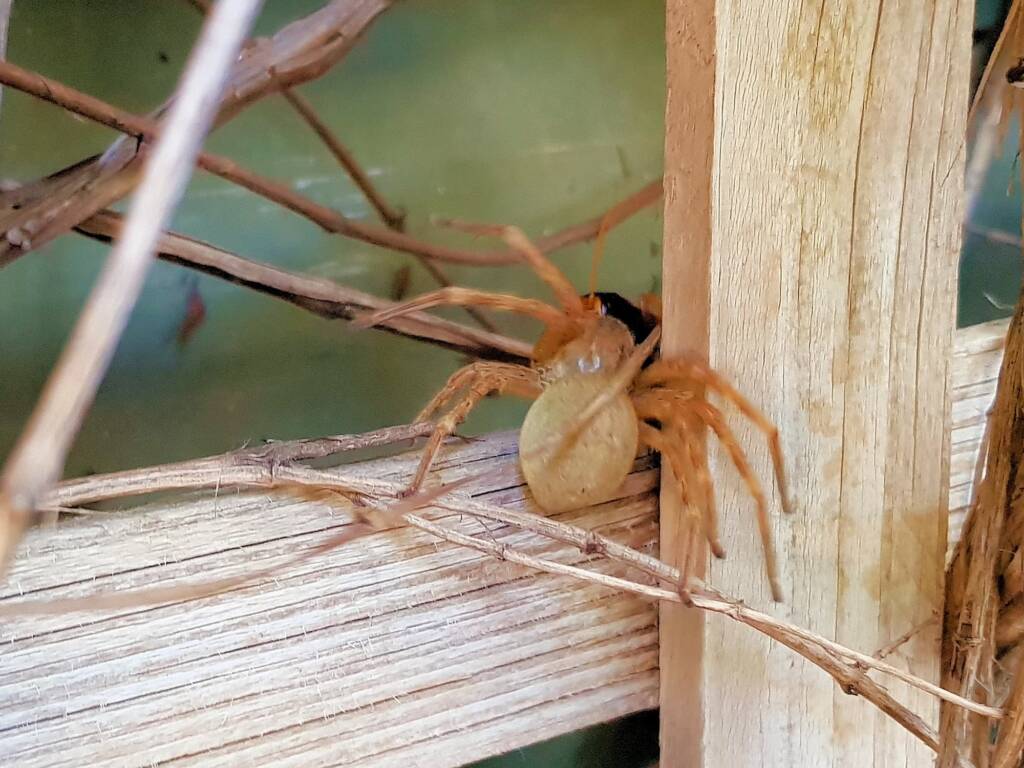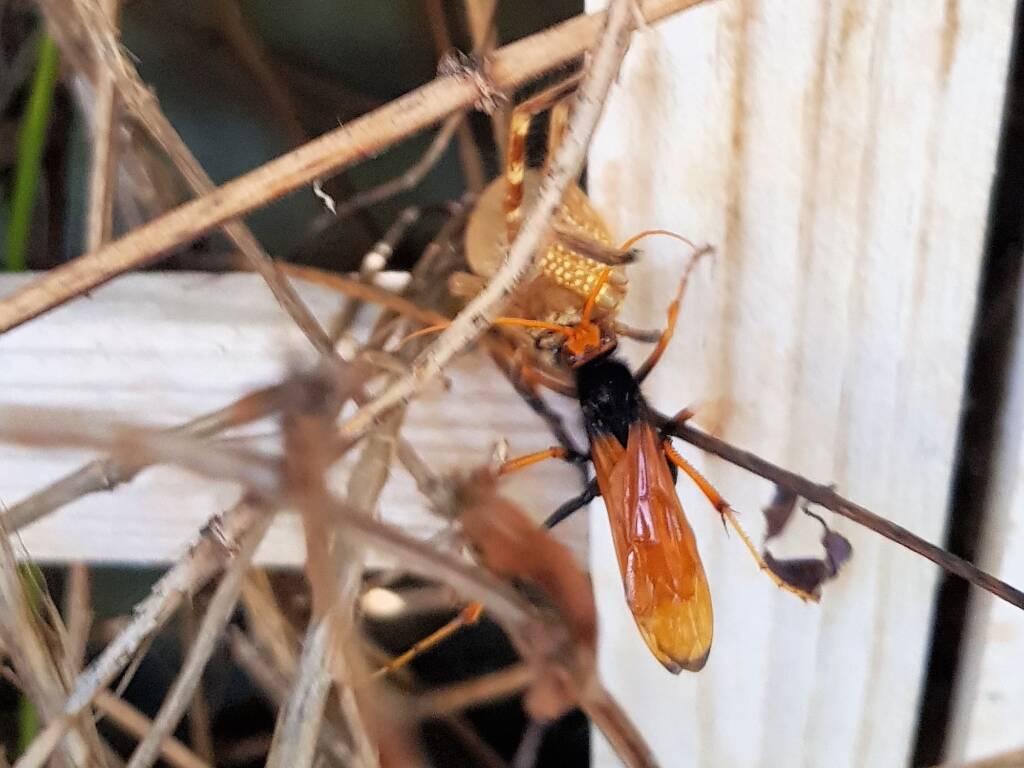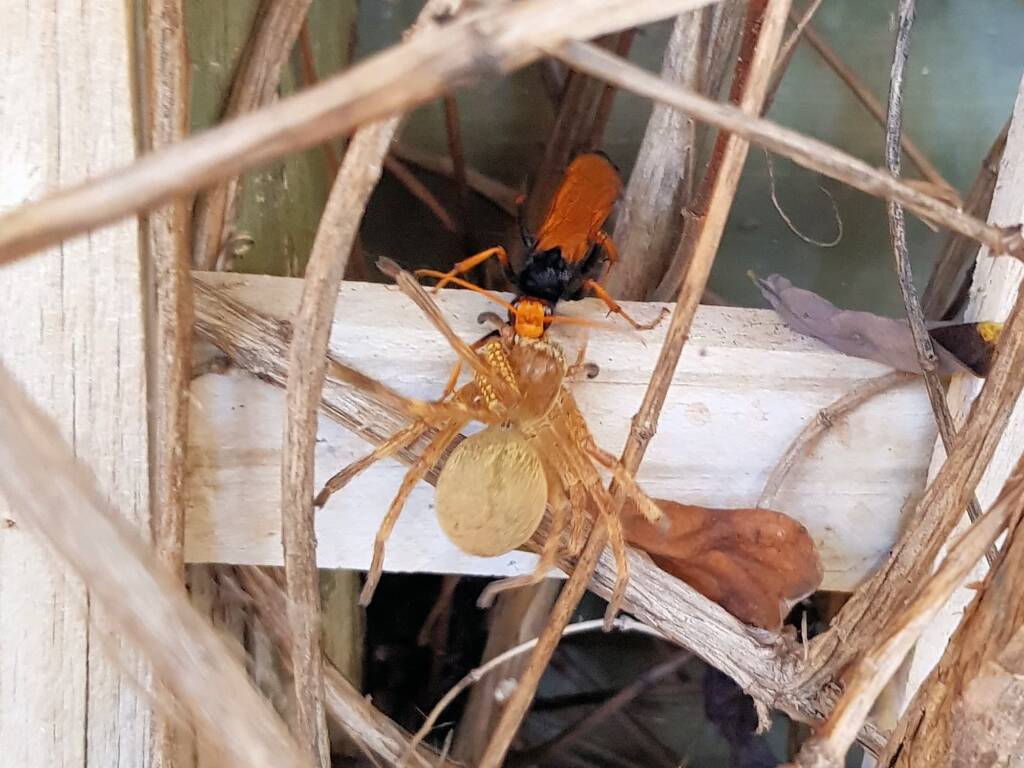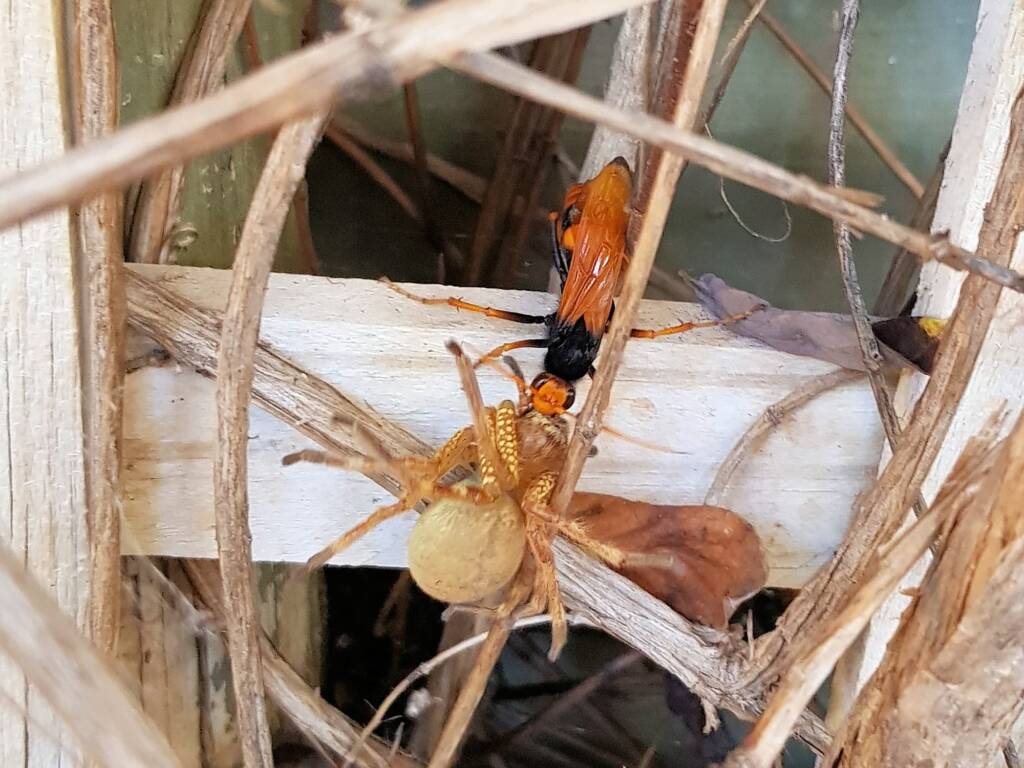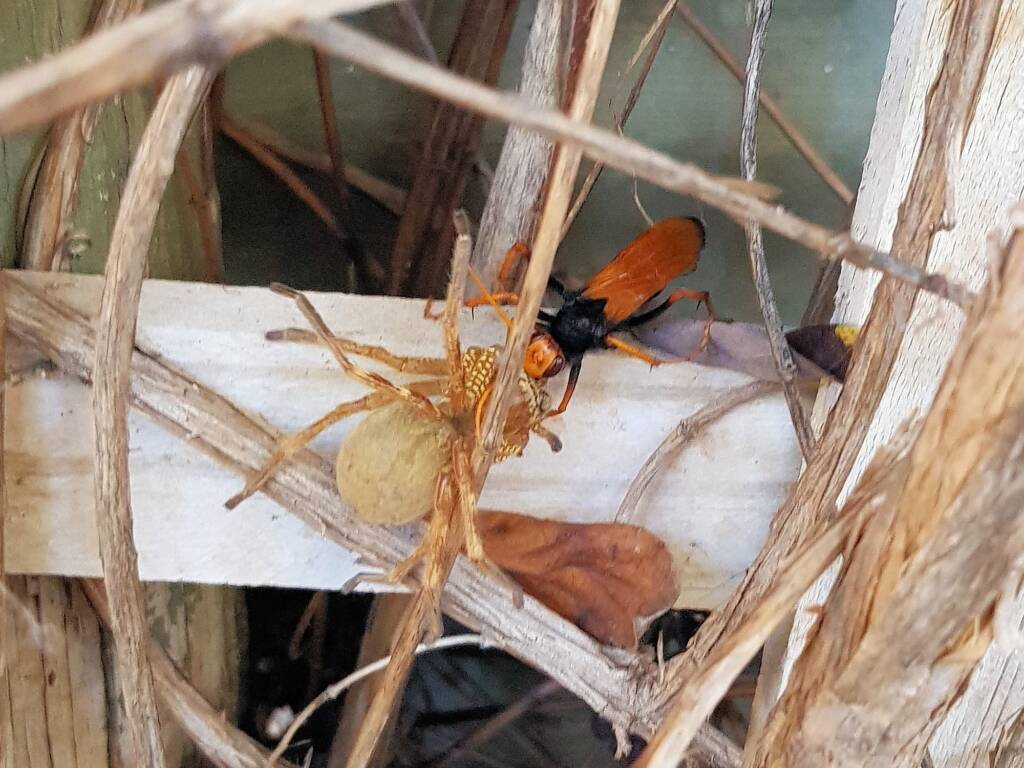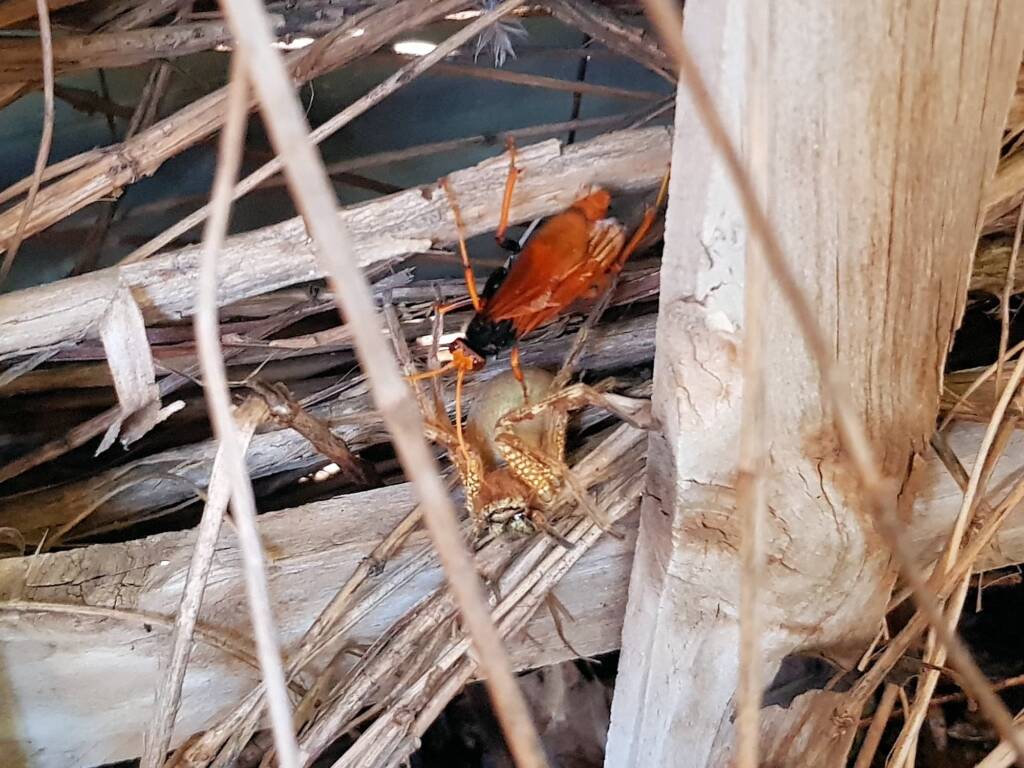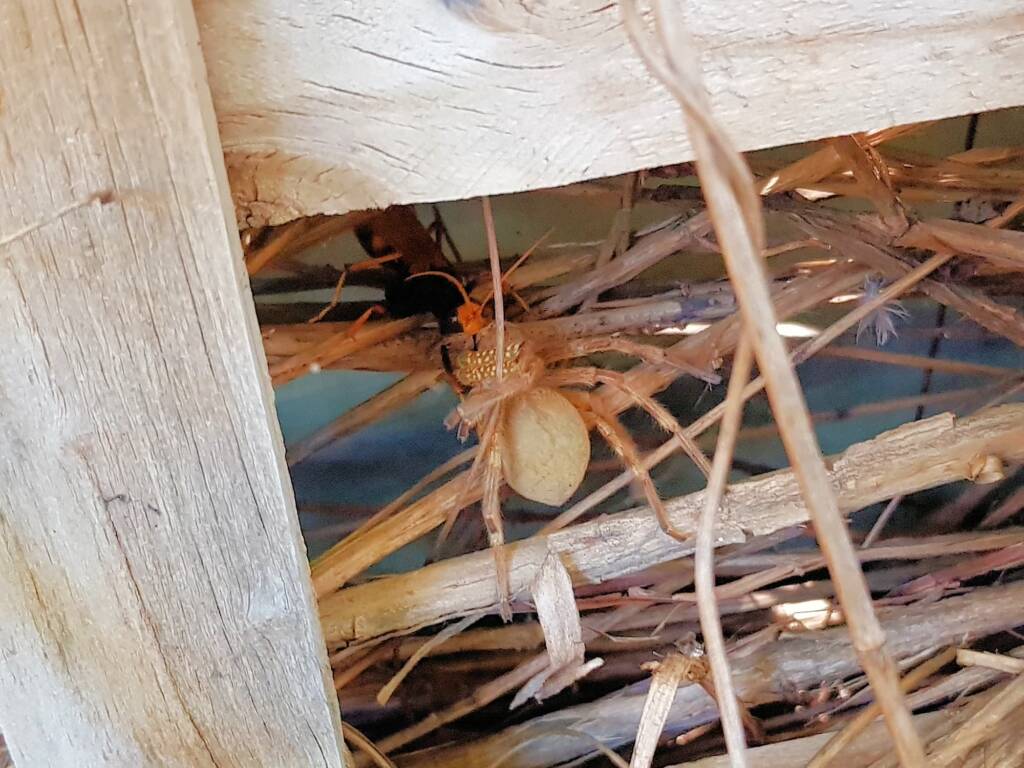Alice Springs Fauna •
Cryptocheilus bicolorPrey (Neosparassus sp)
Cryptocheilus bicolor with prey (Neosparassus sp), Alice Springs NT
The prey of the Orange Spider Wasp (Cryptocheilus bicolor) are usually the large spiders, in particular huntsman spiders (family Sparassidae) and wolf spiders (family Lycosidae).
The following series of photographs are from an urban garden in Alice Springs. The Cryptocheilus bicolor is seen with an unknown species of Neosparassus sp. In the first couple of photos, the spider wasp had paralysed the spider whilst in a metal dog bowl that was leaning against the wall. The spider wasp was having trouble getting a grip with it’s legs (so we carefully tipped it out onto the ground).
The spider was Neosparassus sp was flipped over, as the Cryptocheilus bicolor spider wasp started to drag the prey back to the burrow, to be laid as food for the larvae.
The Cryptocheilus bicolor would sometimes leave the prey and wander off (never far away). It may have been slightly disturbed with the presences of the photographer, but eventually appear to get use to the photographer. During one occasion when the spider wasp flew away, we flipped the spider over to get a view of the underside, then flipped the spider back over before the spider wasp returned.
The spider wasp returned to the spider and continued dragging the spider.
At this point, the spider wasp had dragged the spider some 11.5 metres from where it had paralysed the spider. It eventually dragged it into the garden, up and down the garden trellis, then disappeared into the undergrowth of the garden. The time taken, from the dog bowl into the trellis and understory (that includes the time the spider wasp was walking and flying around the spider), took 30 minutes.
Footnote & References
- Many thanks for spider ID to TeZz ReeVe, Shua, Eathan Douglas, Tissa Ratnayeke and banter by others members of Australian spider identification page, Facebook group, https://www.facebook.com/groups/australianspidereducation
- Cryptocheilus bicolor (Orange Spider Wasp), Ausemade
Cryptocheilus bicolorPrey (Neosparassus sp)
Alice Springs WaspsAbispa ephippium Agriomyia maculata Bembicinae Bembix Blue Hairy Flower Wasp Cryptocheilus Cryptocheilus bicolor Delta latreillei Delta philantes Eumeninae Mud Nests and Potter Wasps Orchid Dupe Wasp Paralastor (Potter Wasp) Pseudabispa bicolor ssp. nigrocinctoides Sceliphron laetum Thynnid Flower Wasps Velvet Ant Family (Tribe Dasymutillini) Yellow Hairy Flower Wasp (Radumeris radula) Yellow Hairy Flower Wasp (Radumeris tasmaniensis)
Alice Springs FaunaAlice Springs Native Bees Alice Springs Beetles Alice Springs Birds Alice Springs Gastropods (Gastropoda) Alice Springs Insects Alice Springs Marsupials Alice Springs Reptiles Alice Springs Spiders
Alice Springs FloraAlice Springs Flora Index Acacia ligulata Annual Yellowtop Apple Bush Bougainvillea Burdekin Plum Carob Tree (Ceratonia siliqa) Cattle Bush Desert Cotton (Aerva javanica) Desert Oak Eremophila Wildberry Feijoa sellowiana Flannel Cudweed Fork-leaf Corkwood Ghost Gum Golden Everlasting Kurrajong Lemon-flowered Gum MacDonnell’s Desert Fuchsia Native Bluebell Native Tomato Needlewood Olive Tree Perennial Yellow Top Rat’s Tail River Red Gum Inland River Red Gum Rosy Dock Round-leaved Mallee Scurvy Grass Silky Eremophila Stemodia viscosa Striped Mintbush Sturt’s Desert Pea Sturt’s Desert Rose Tangled Leschenaultia Tar Vine Weeping Bottlebrush White Cedar Yellow Billybutton Yellow-keeled Swainsona Yellow Oleander

